Abstract
This paper uses relatively simple and deterministic mathematical models to examine the impact that different immunization policies have on the age-specific incidence of rubella and measles. Following earlier work by Knox (1980) and others, we show that immunization programmes can, under some circumstances, increase the total number of cases among older age groups; the implications for the overall incidence of measles encephalitis and of congenital rubella syndrome are examined, paying attention both to the eventual equilibrium and to the short-term effect in the first few decades after immunization is initiated. Throughout, we use data (from the U.K., and U.S.A. and other countries) both in the estimation of the epidemiological parameters in our models, and in comparison between theoretical predictions and observed facts. The conclusions defy brief summary and are set out at the end of the paper.
Full text
PDF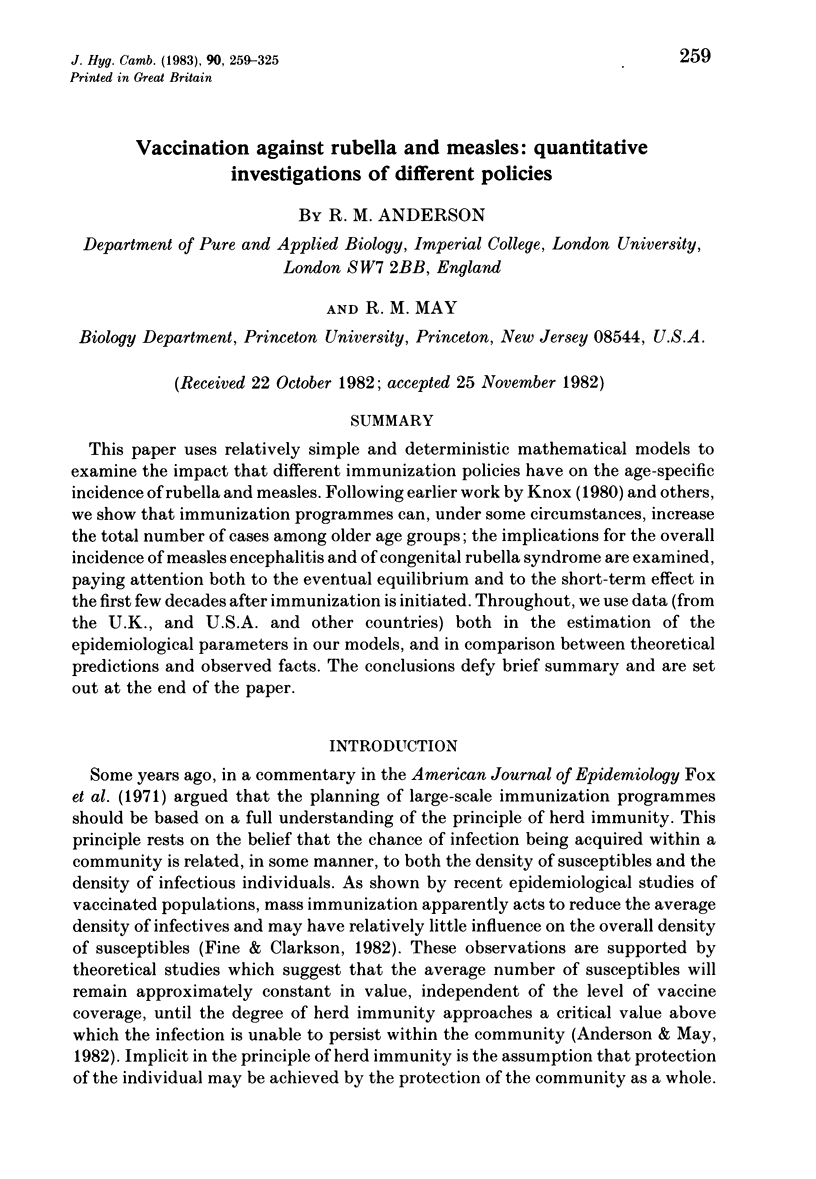
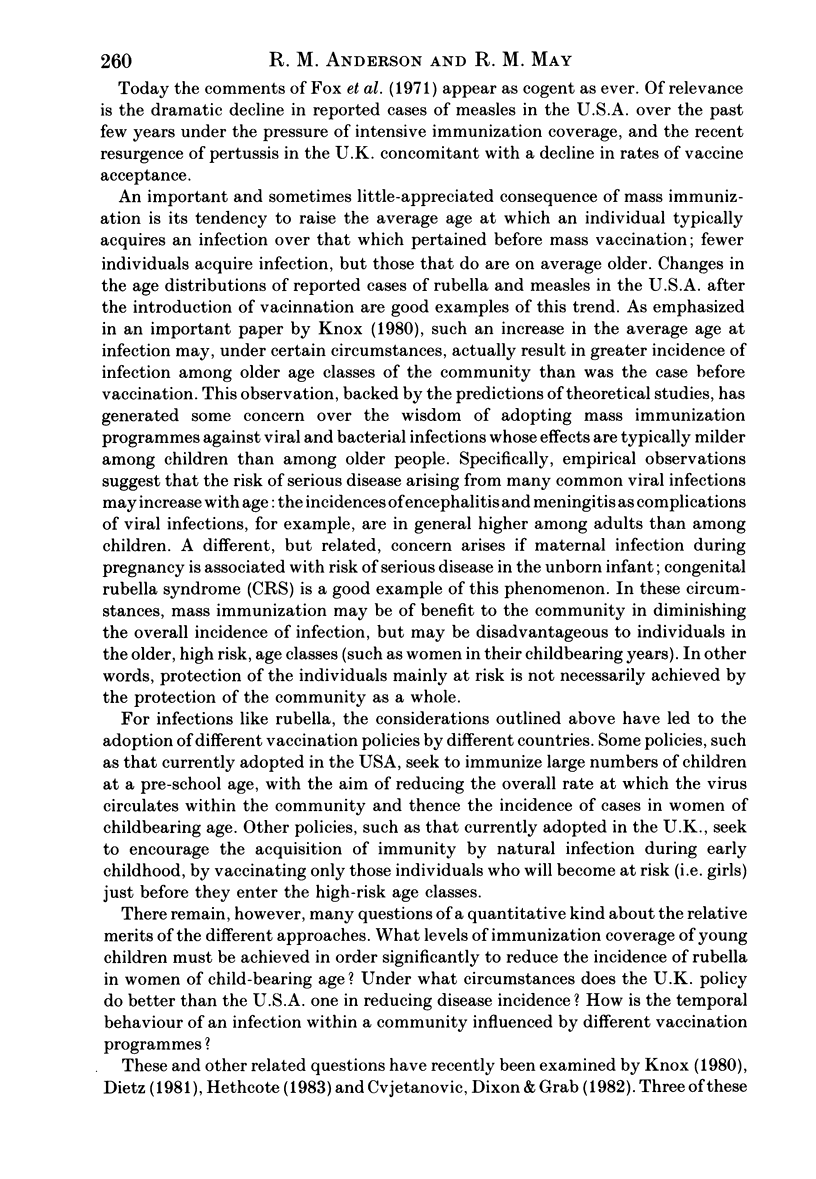
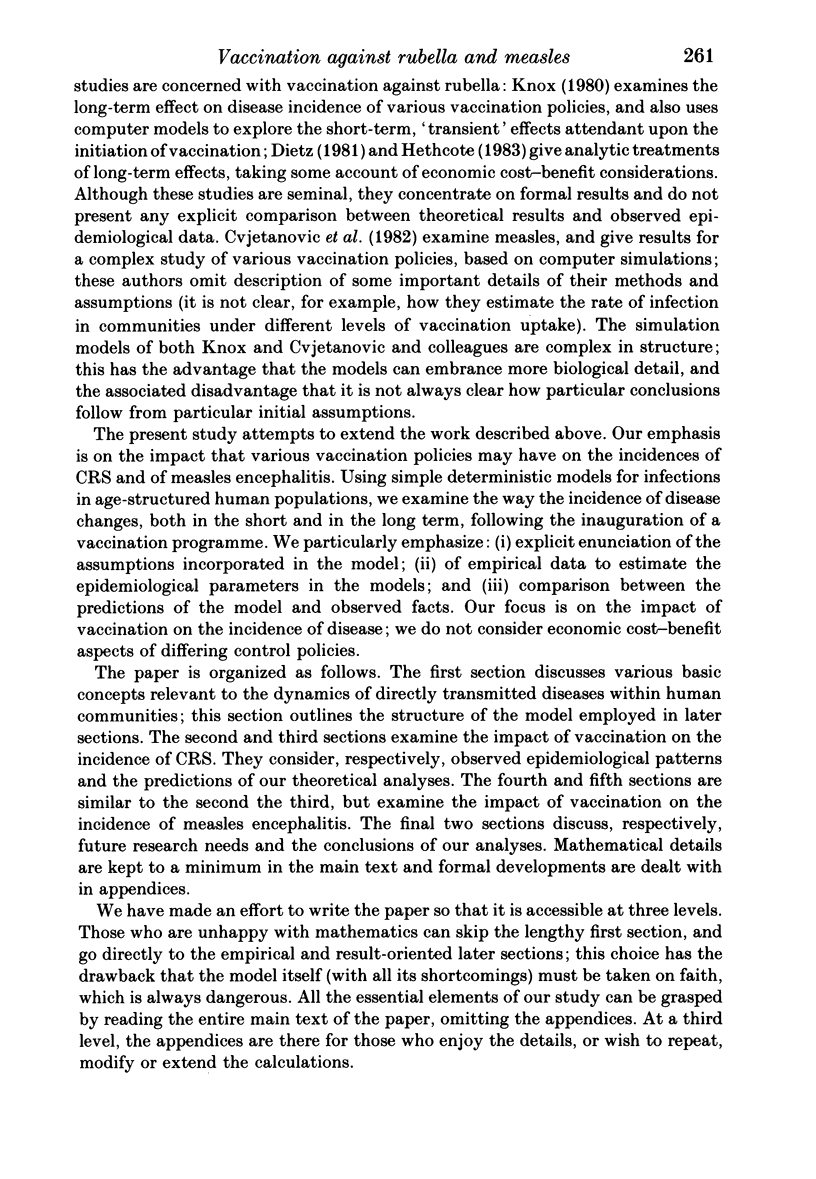
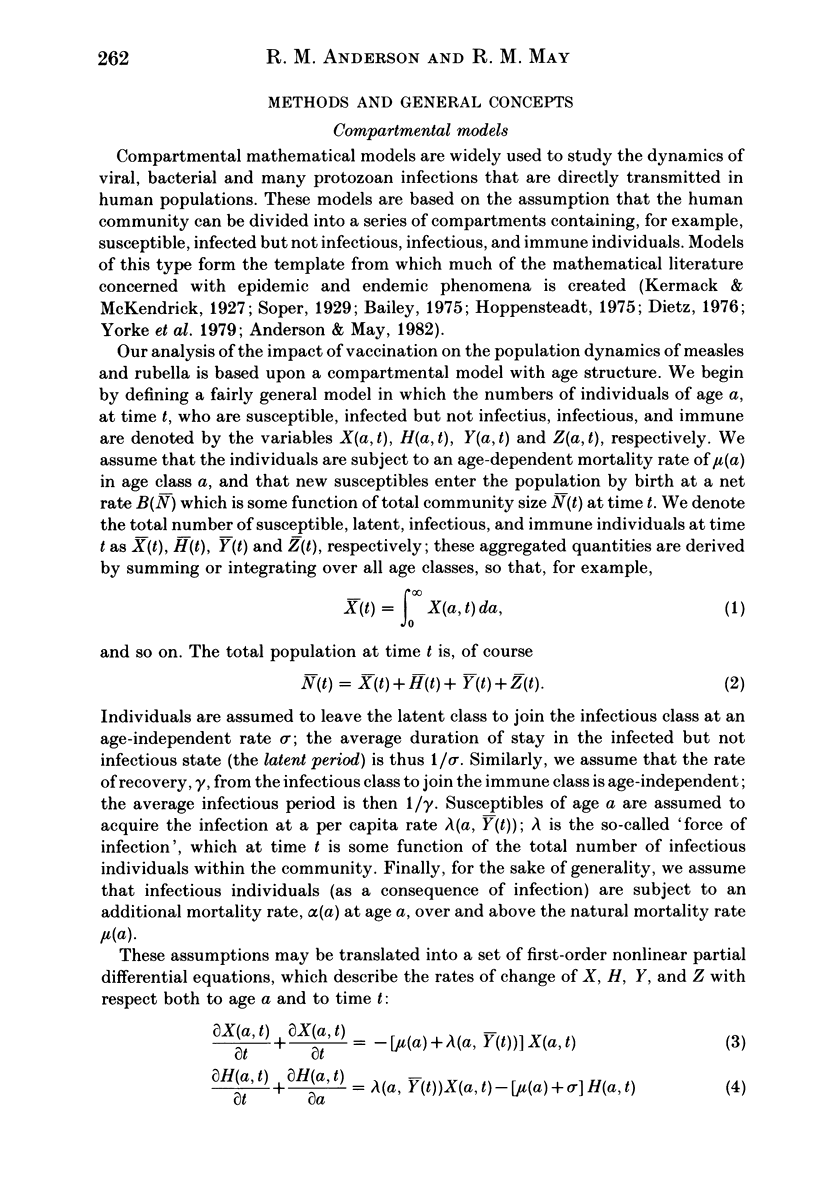
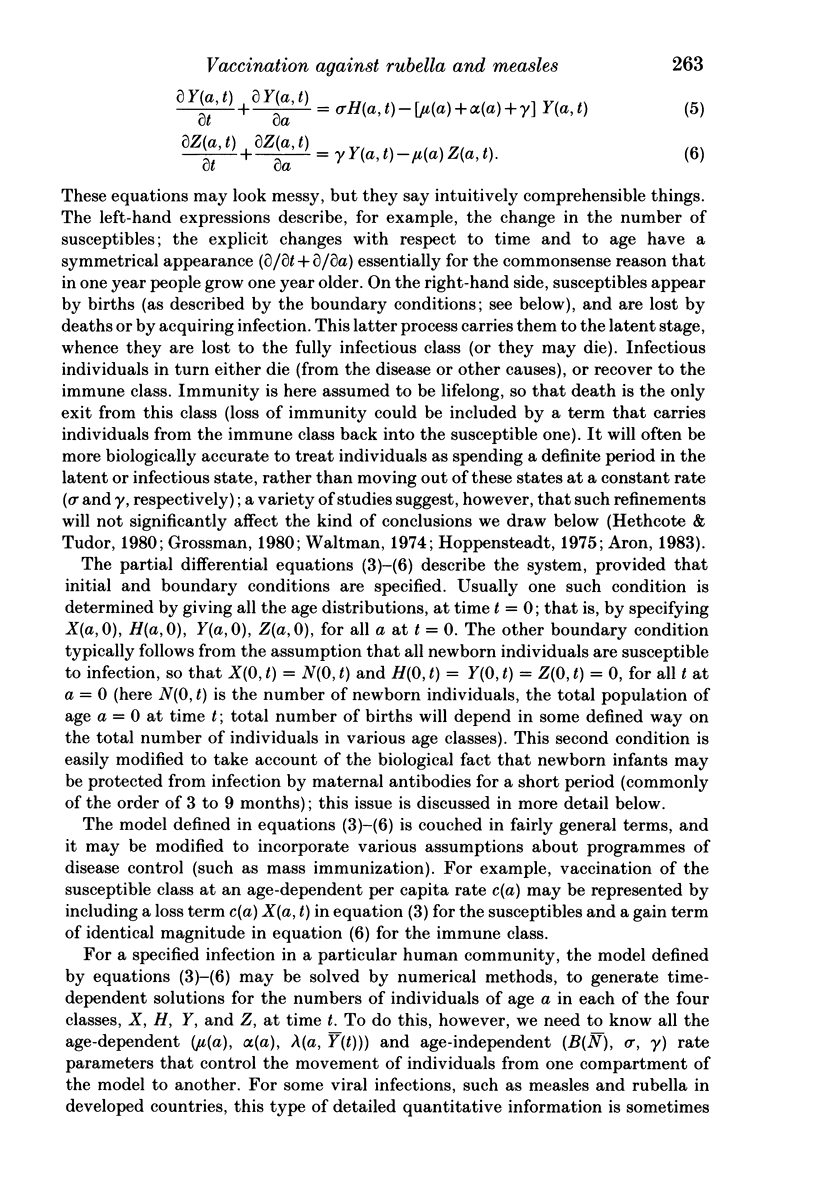
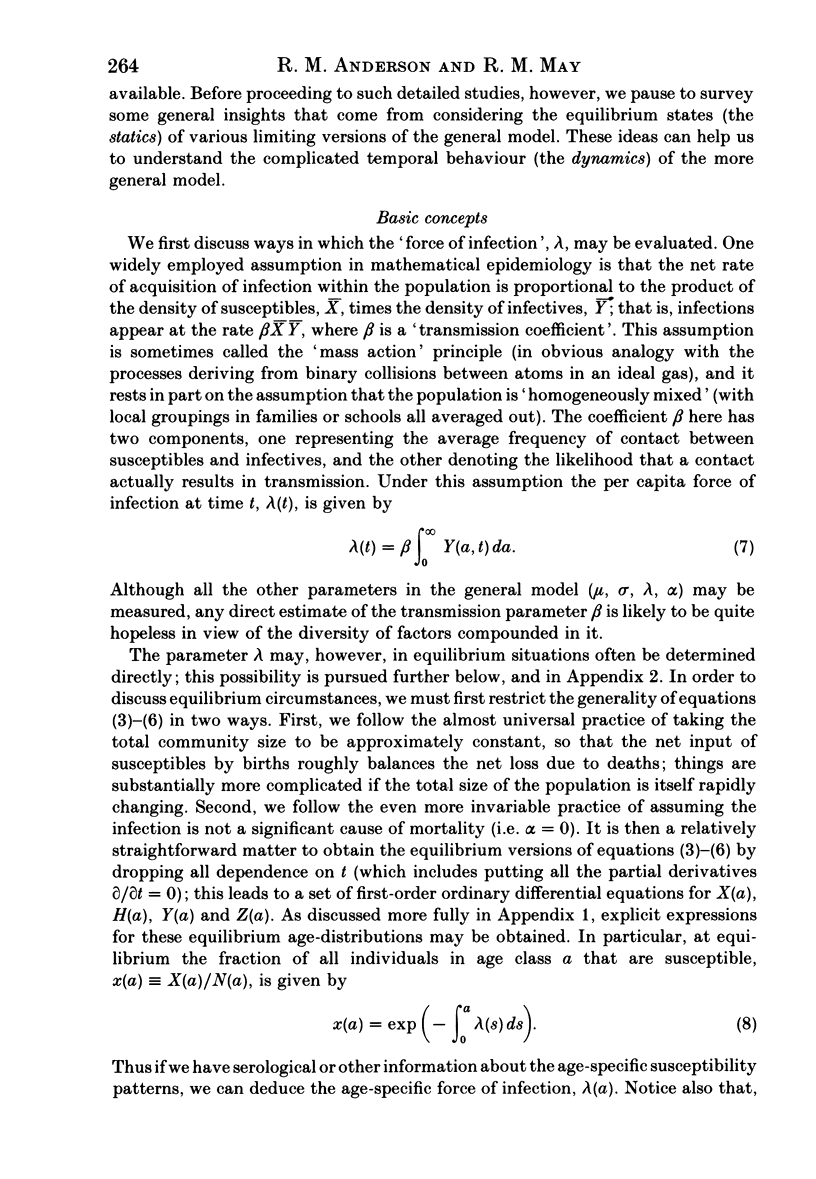
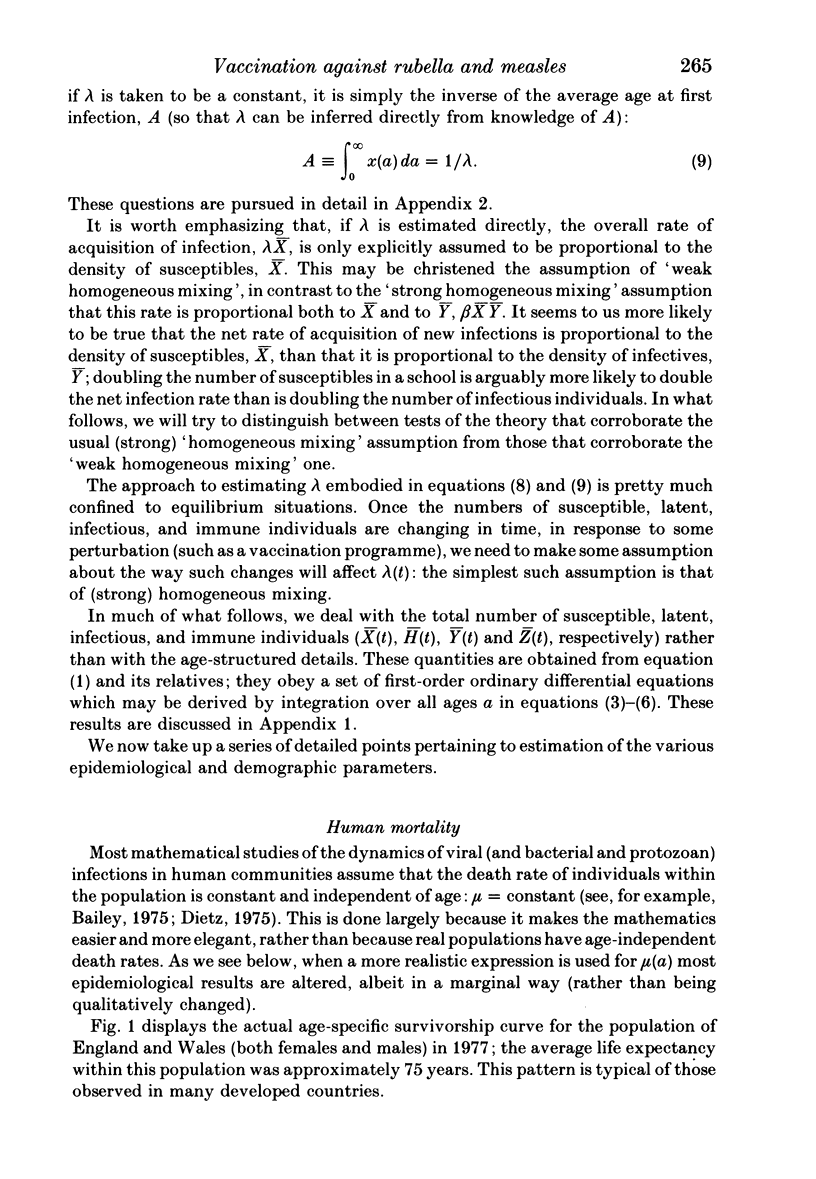
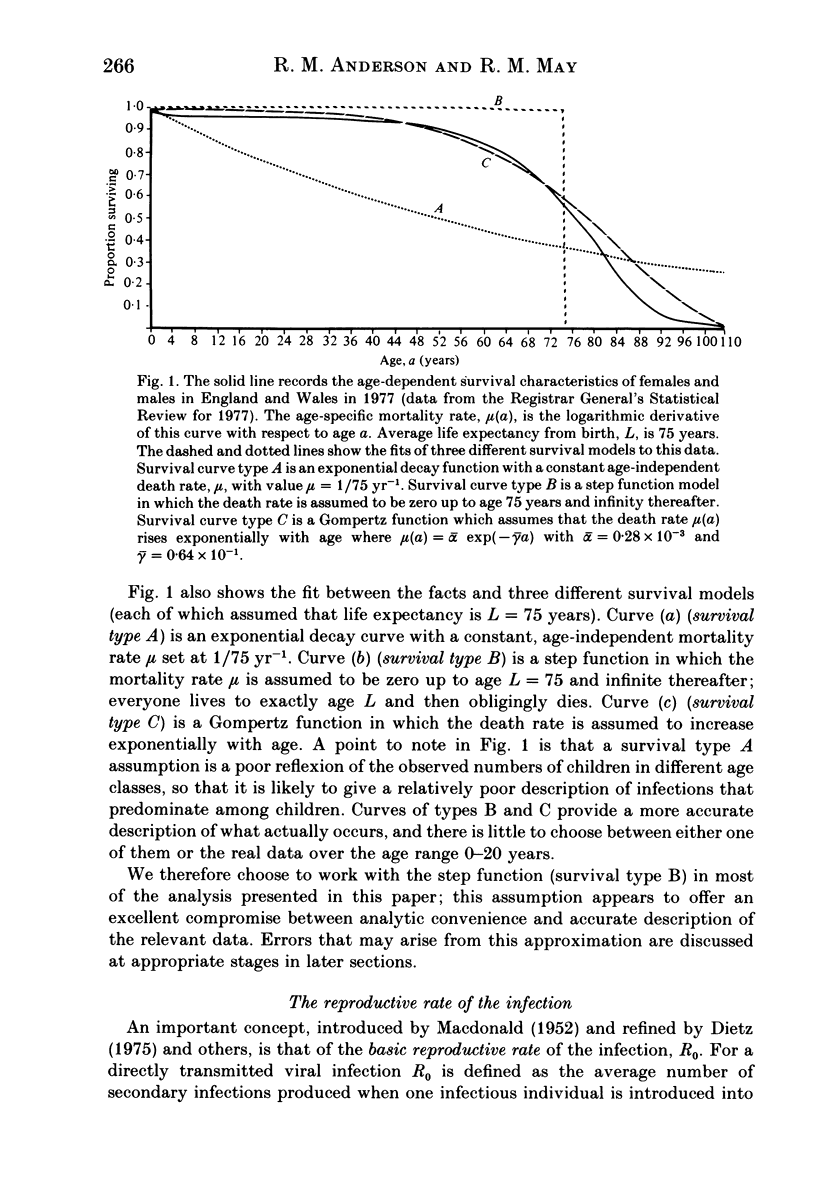
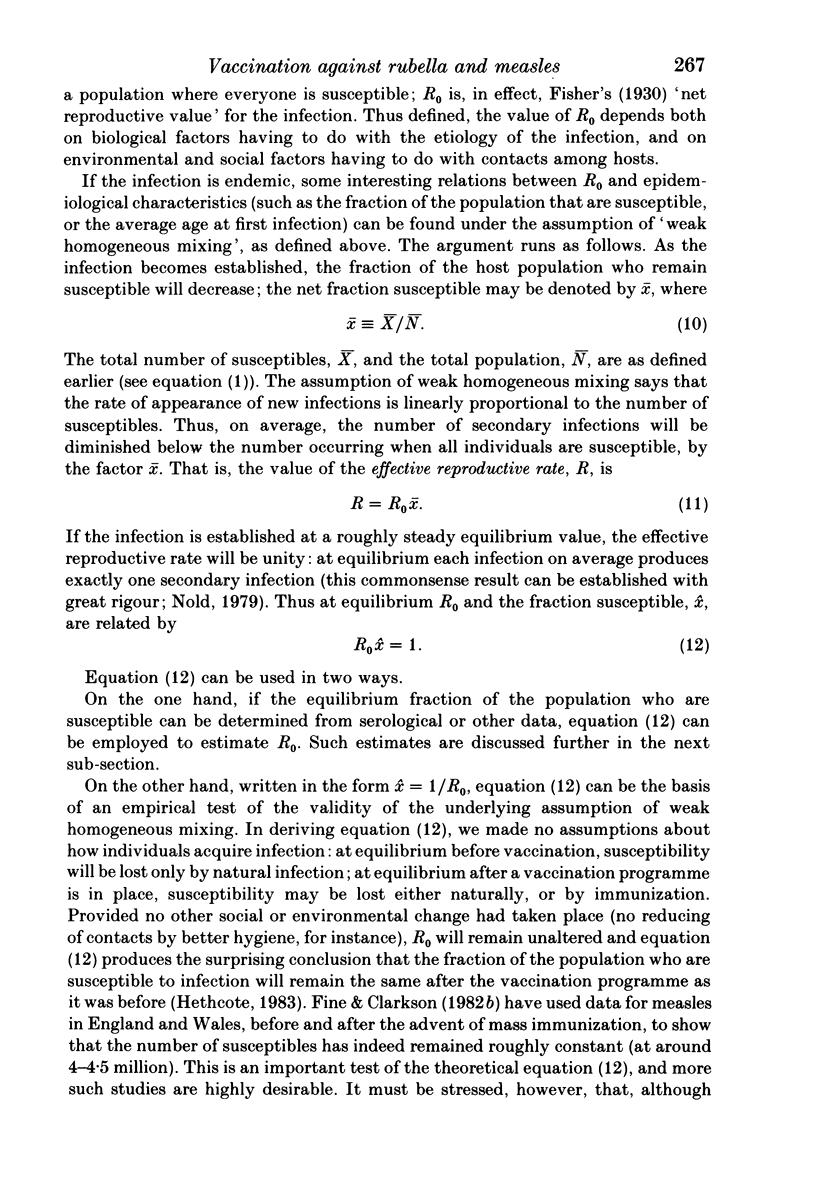
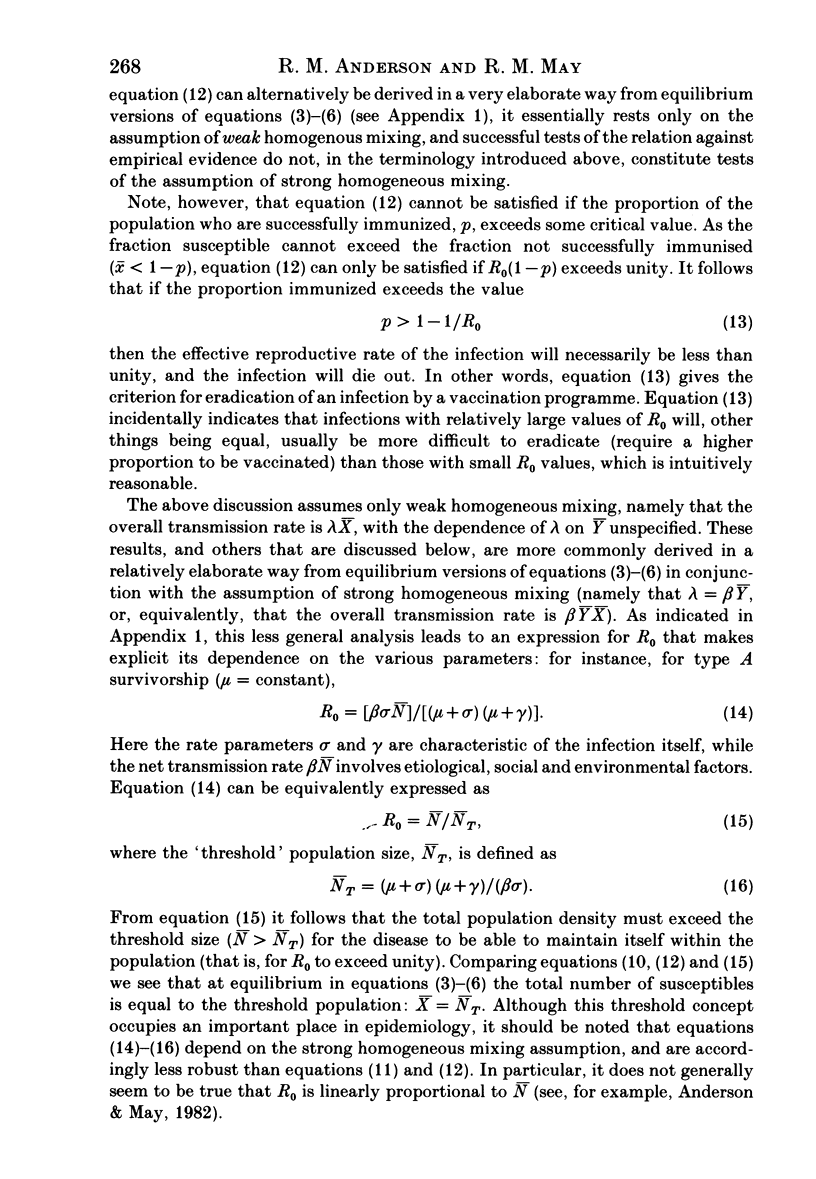
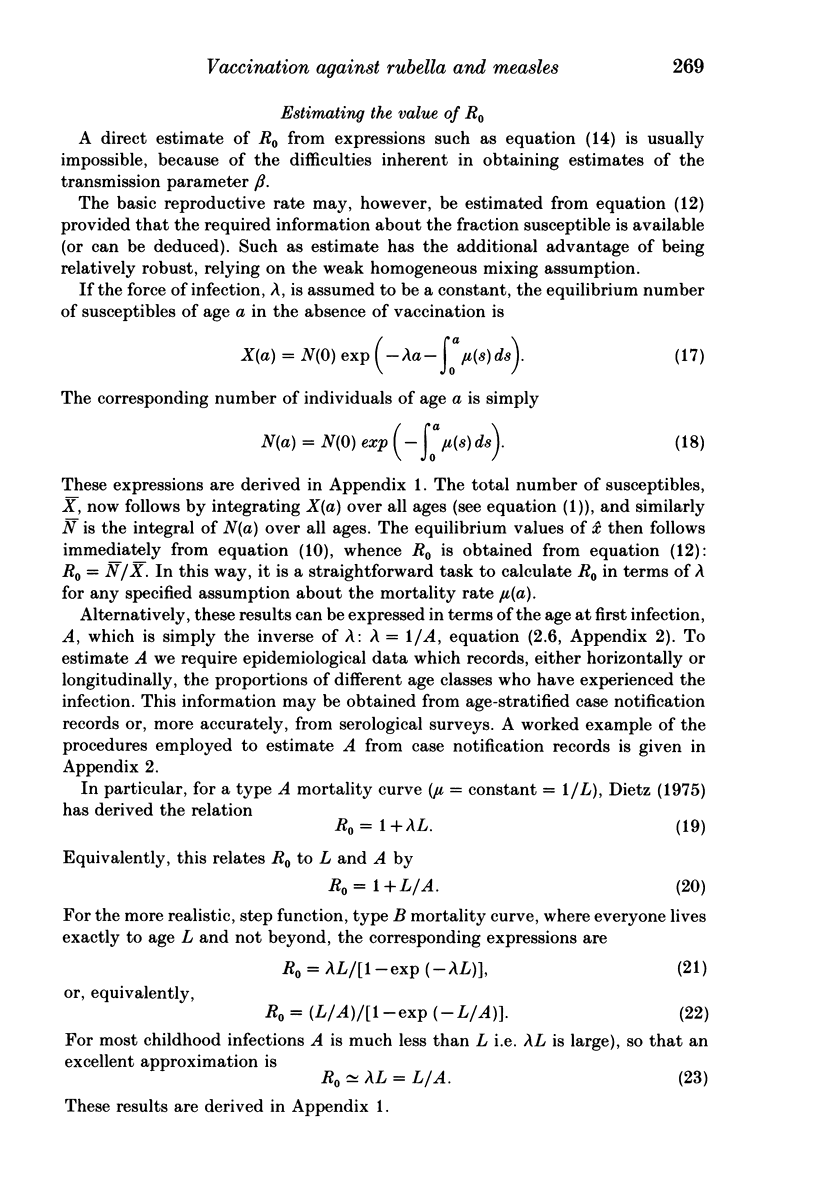
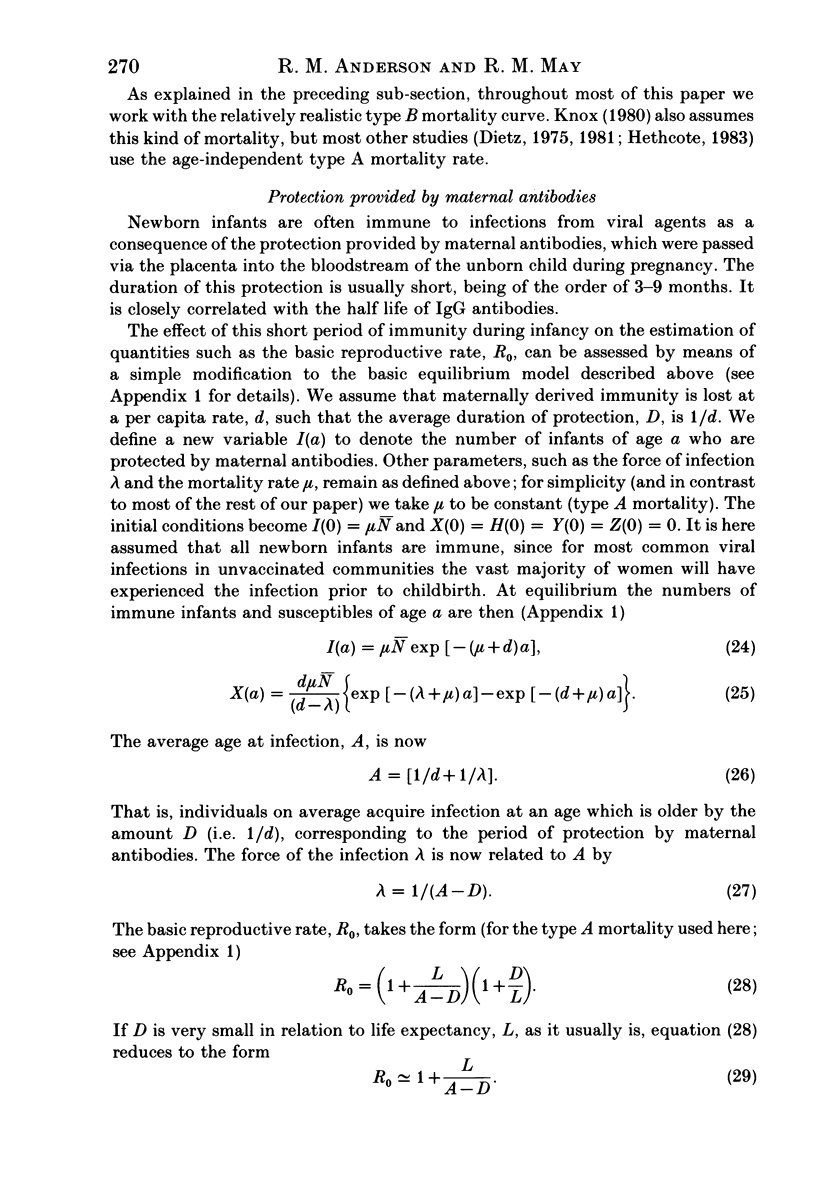
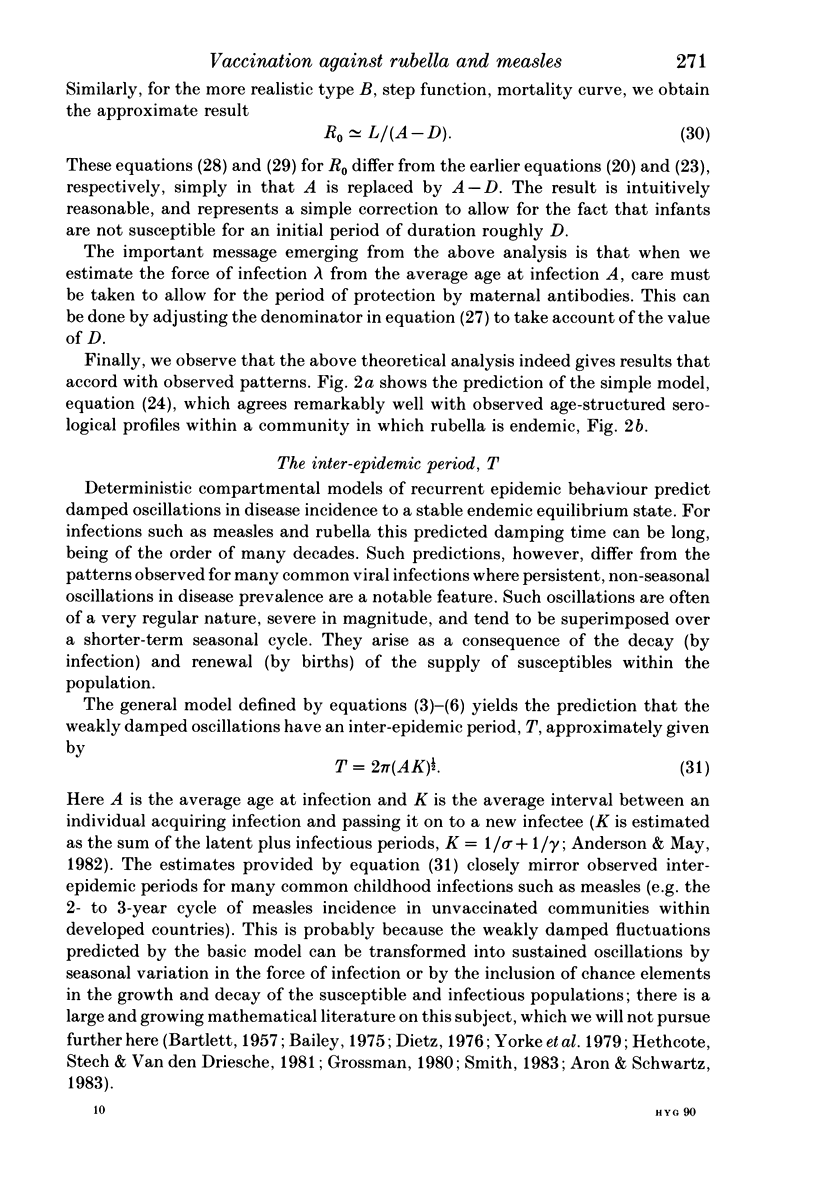
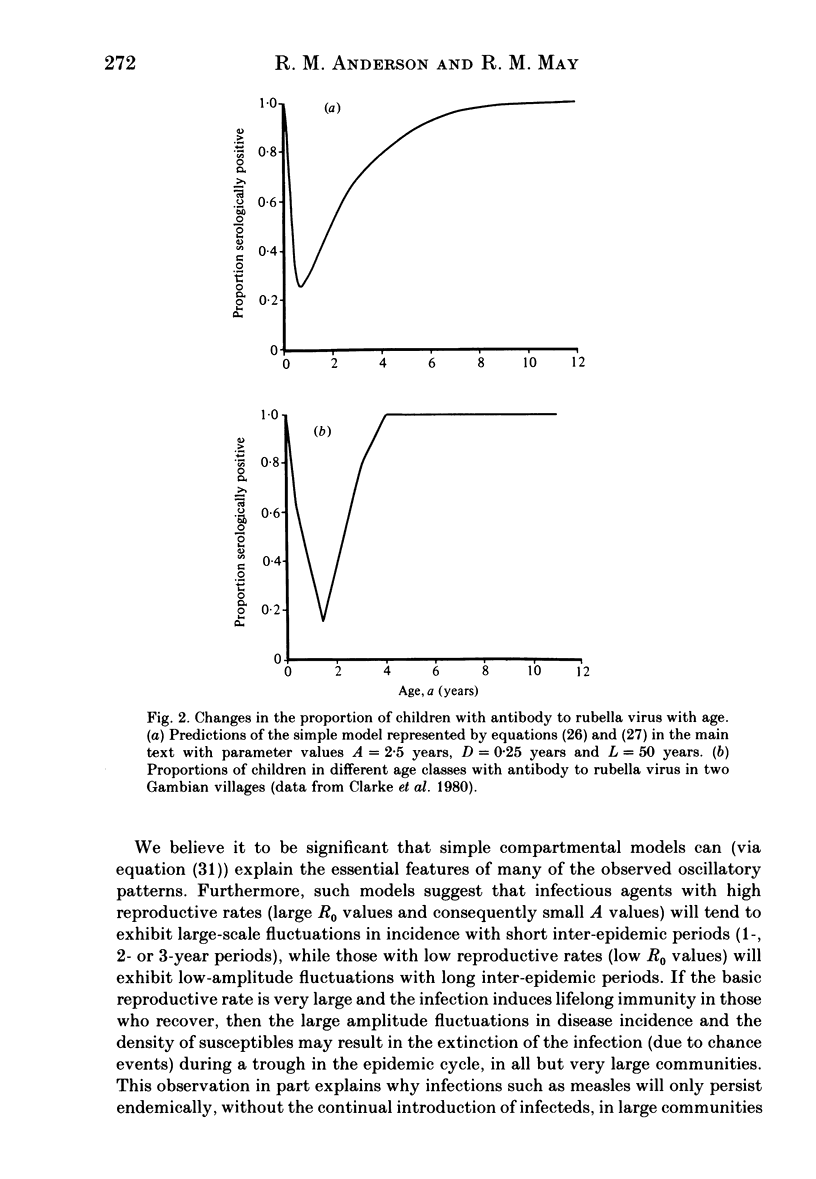
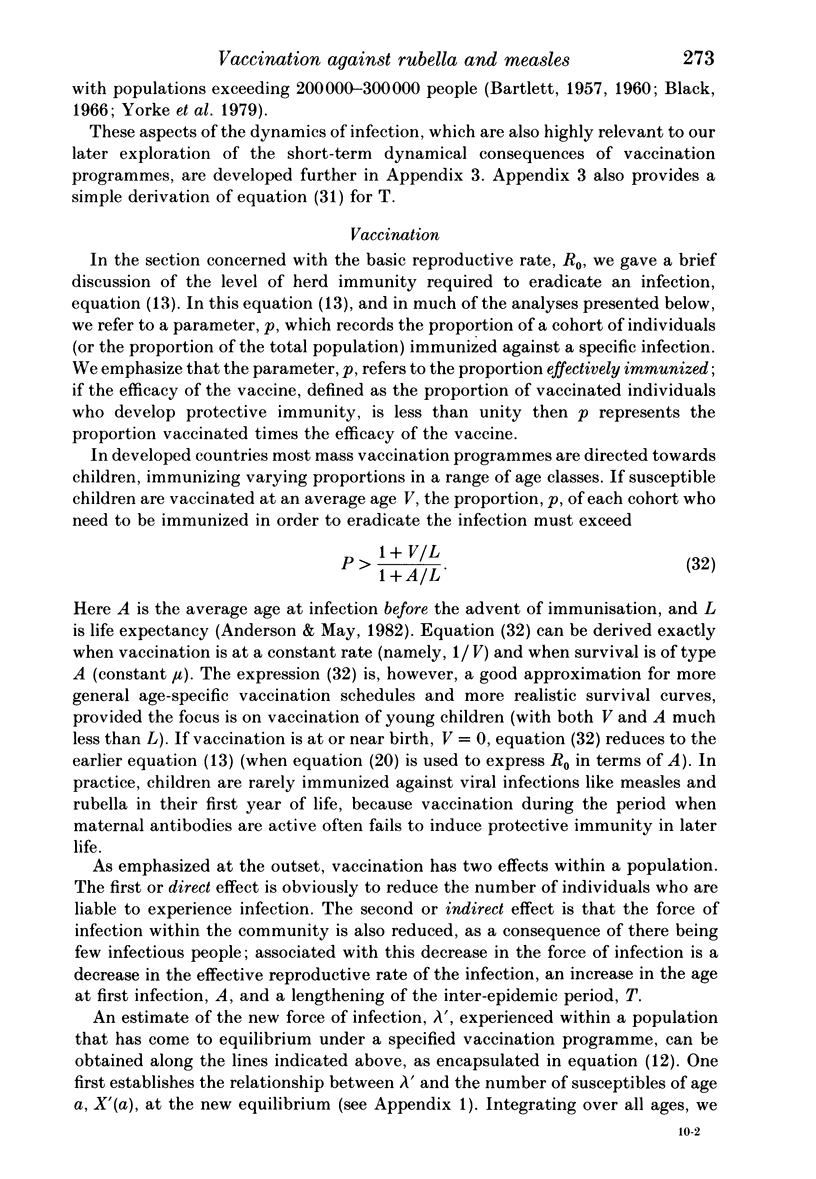
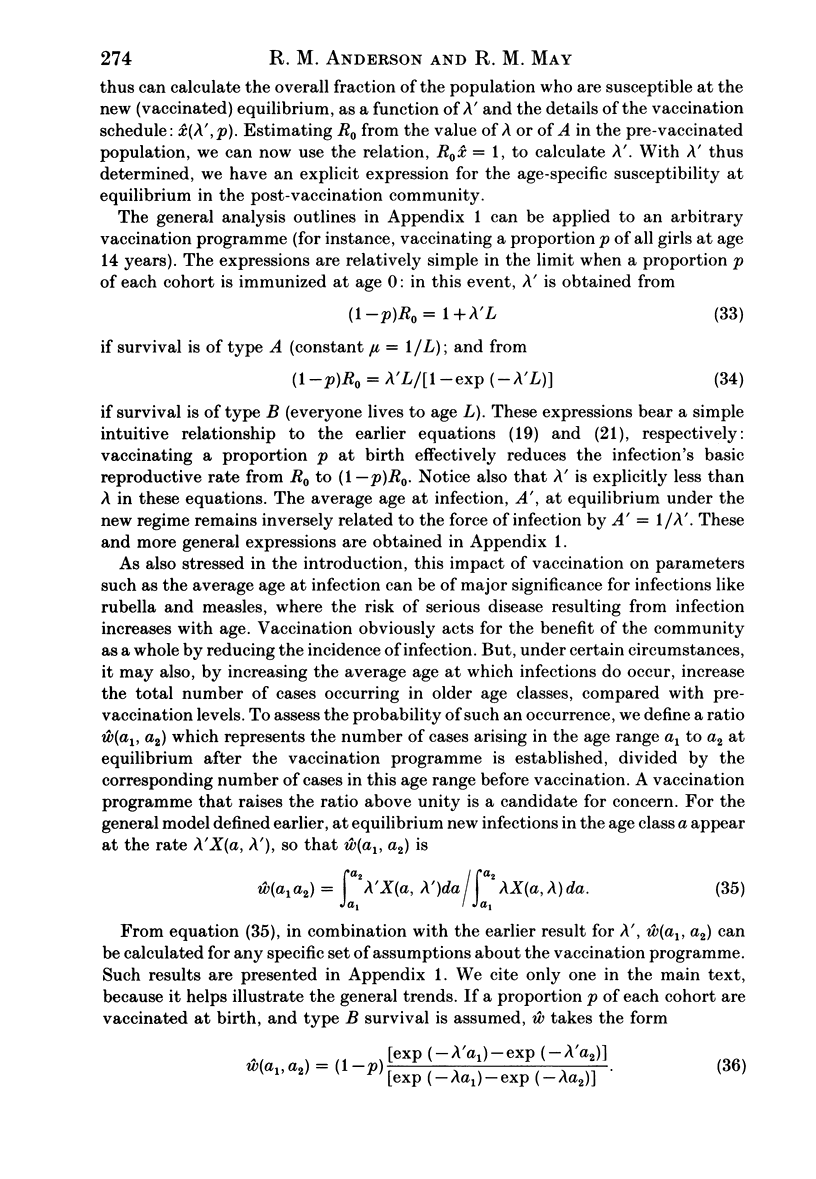
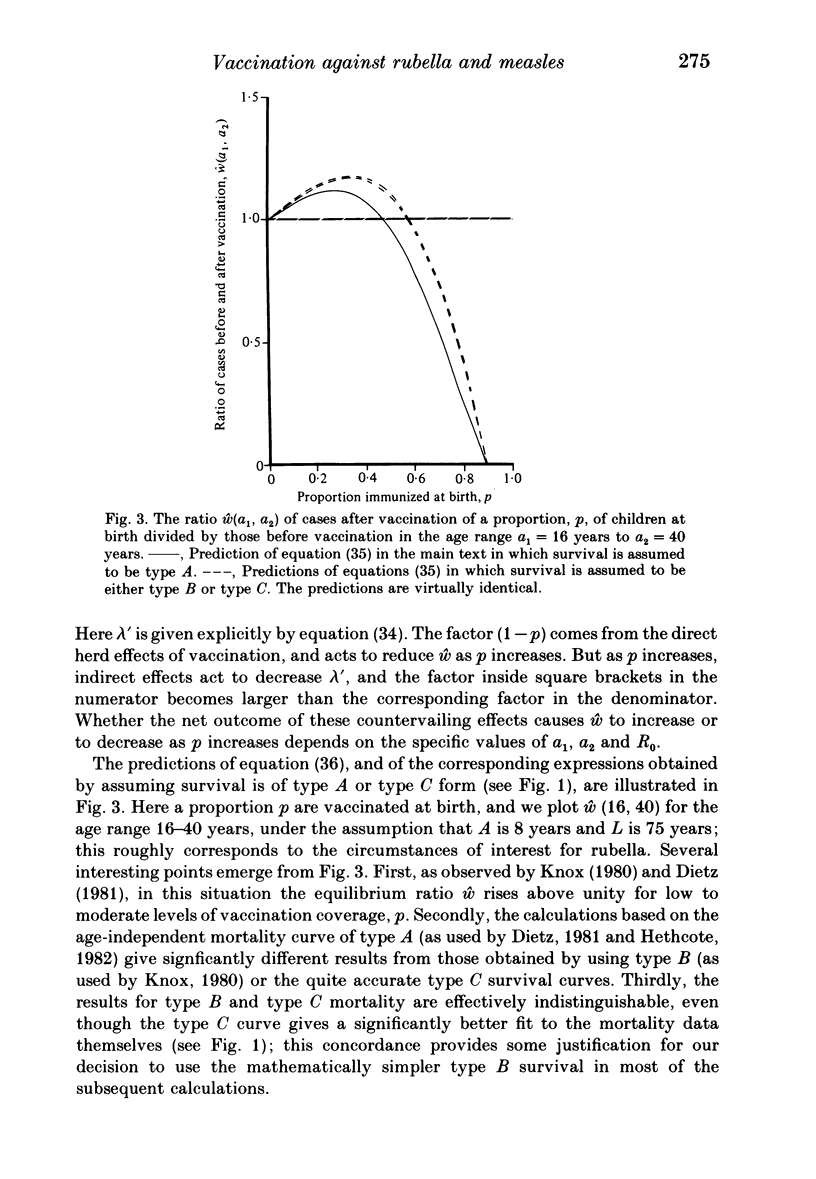
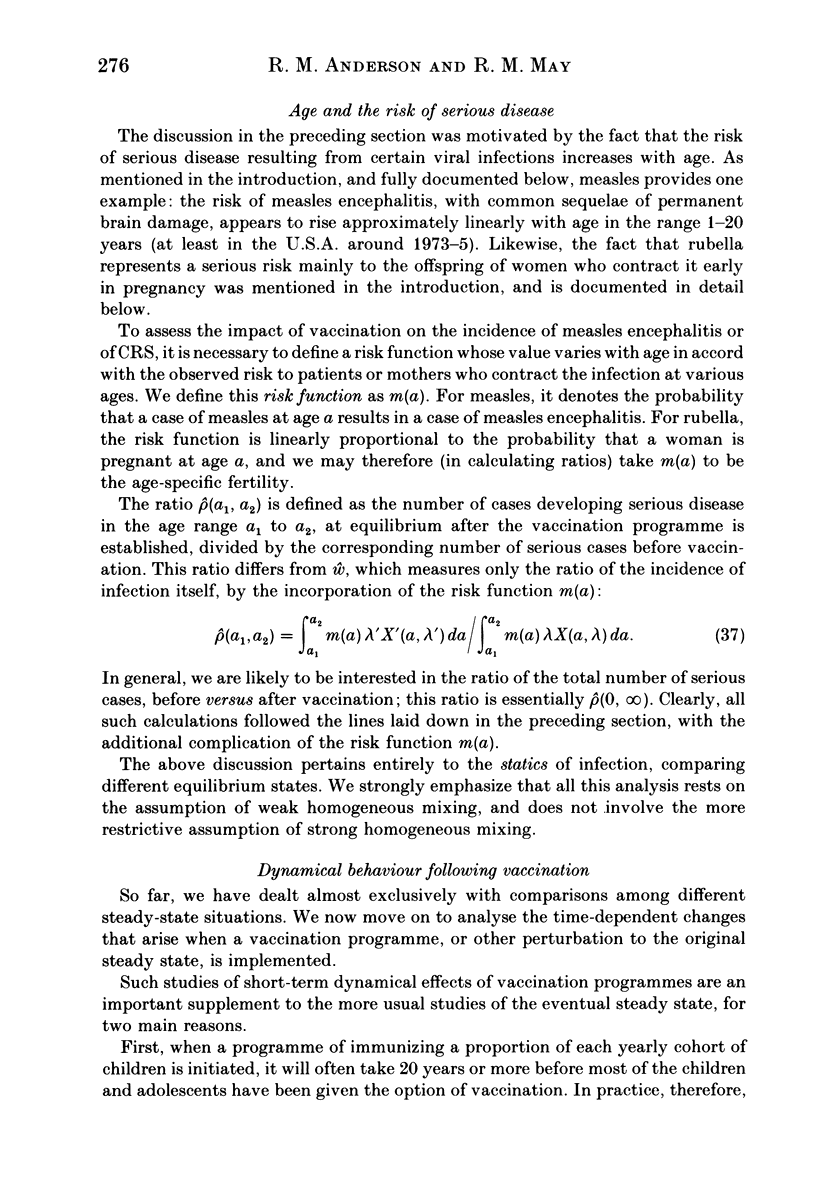
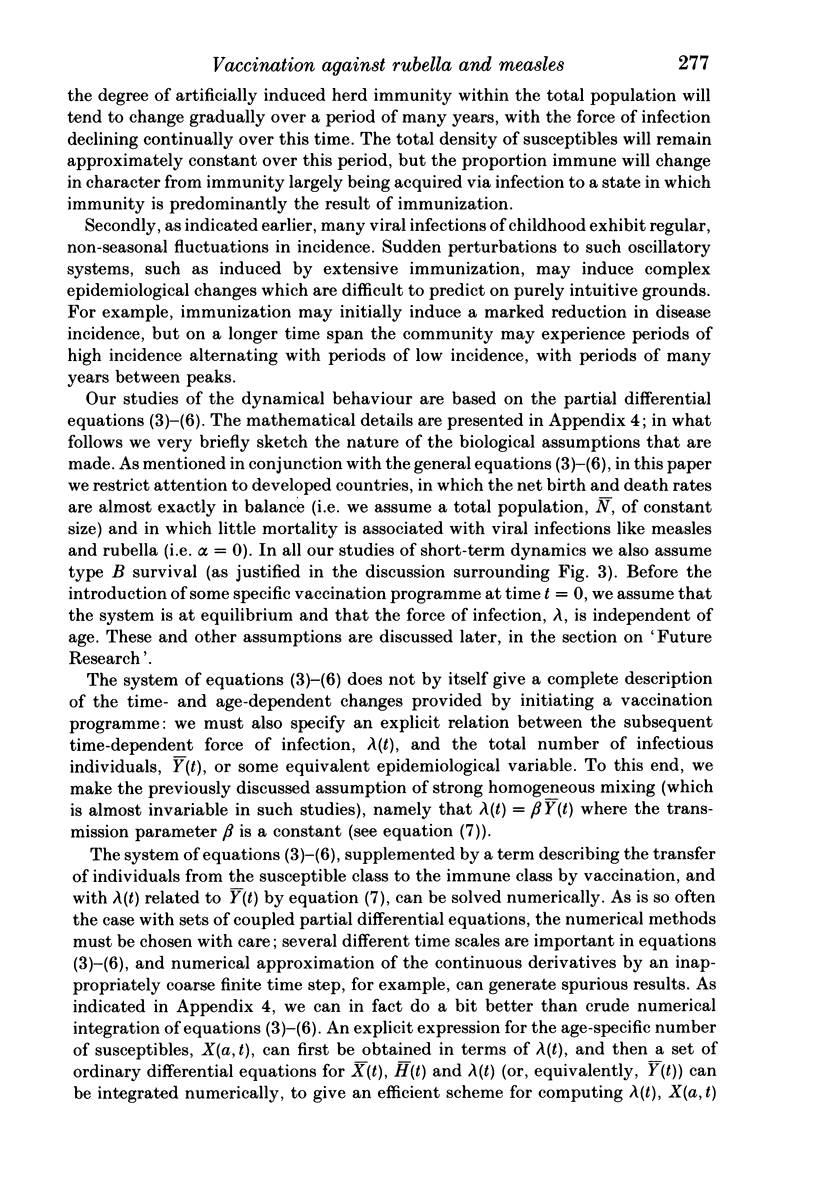
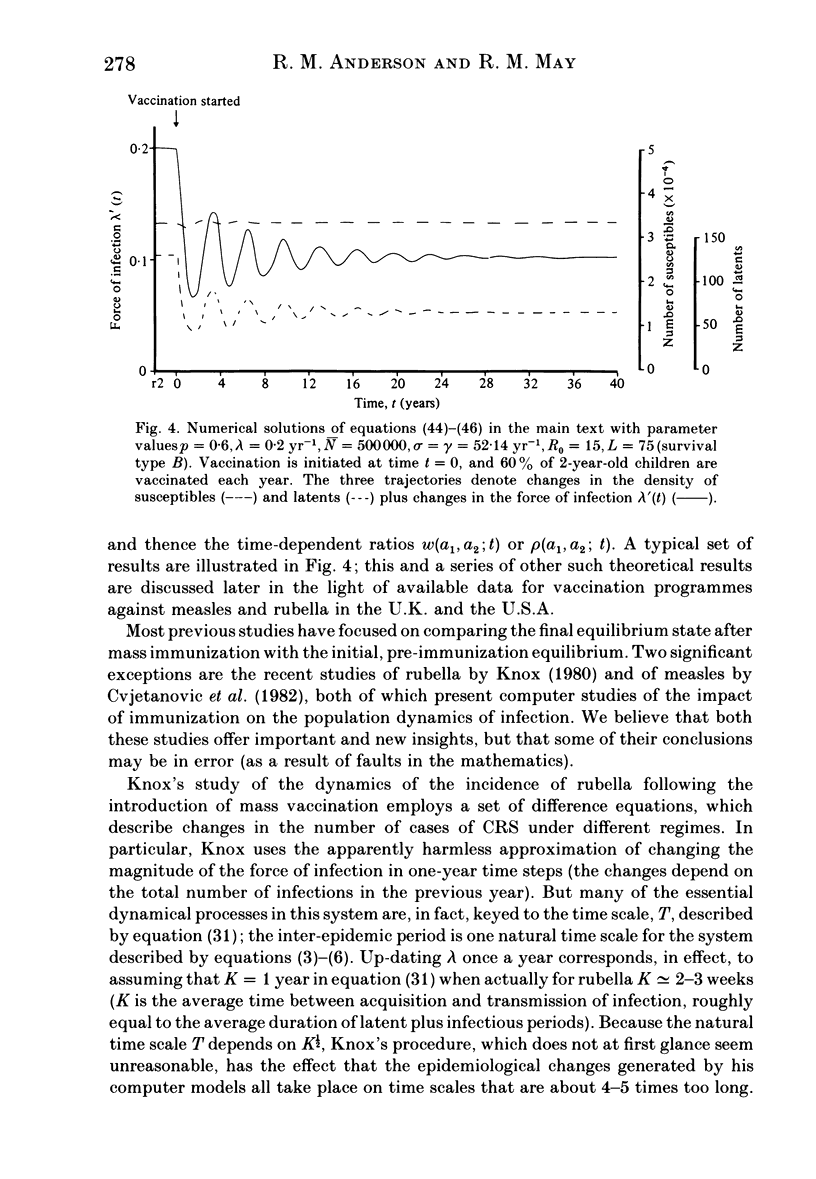
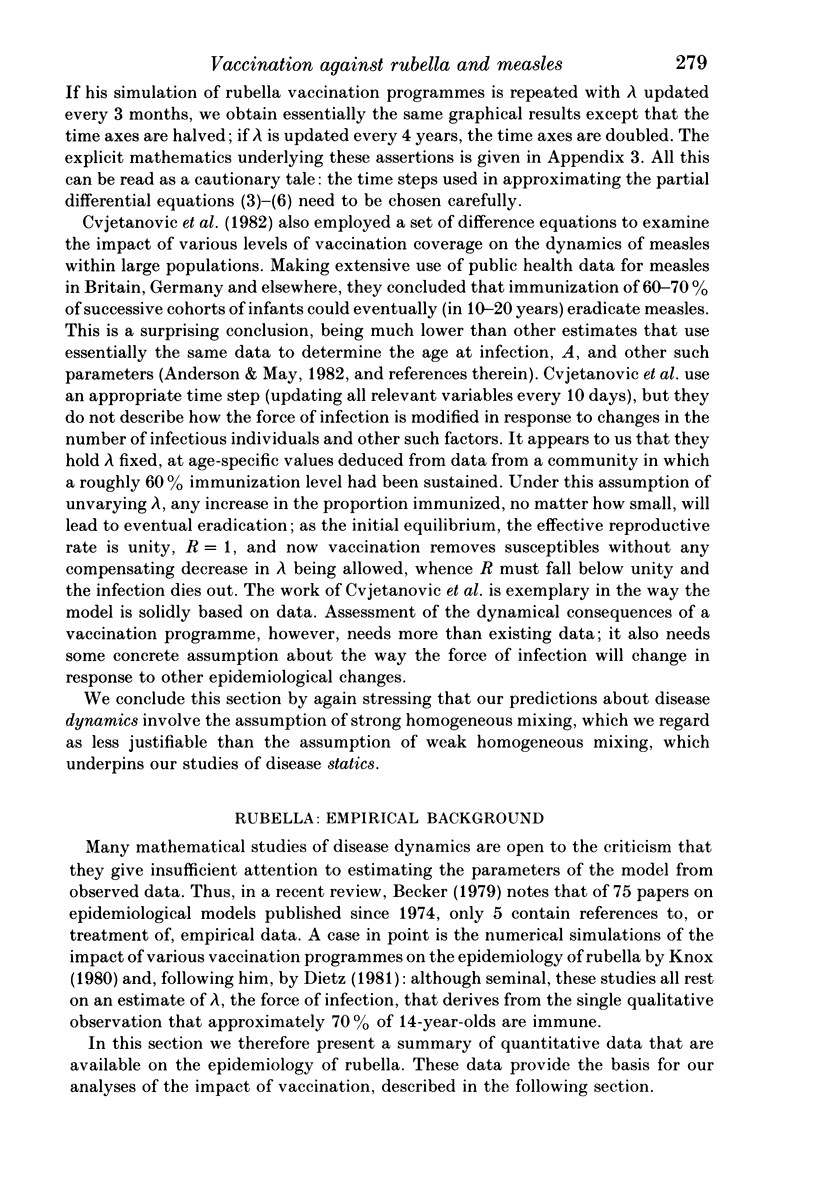
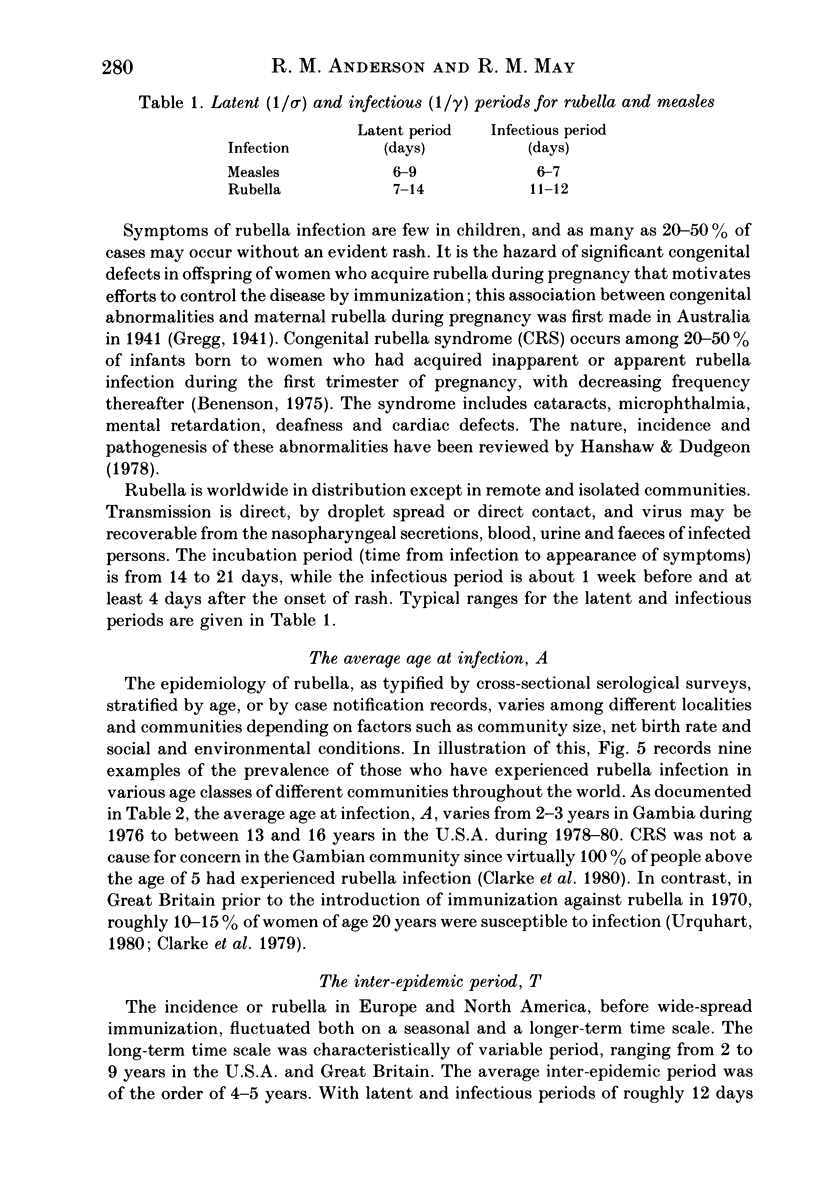
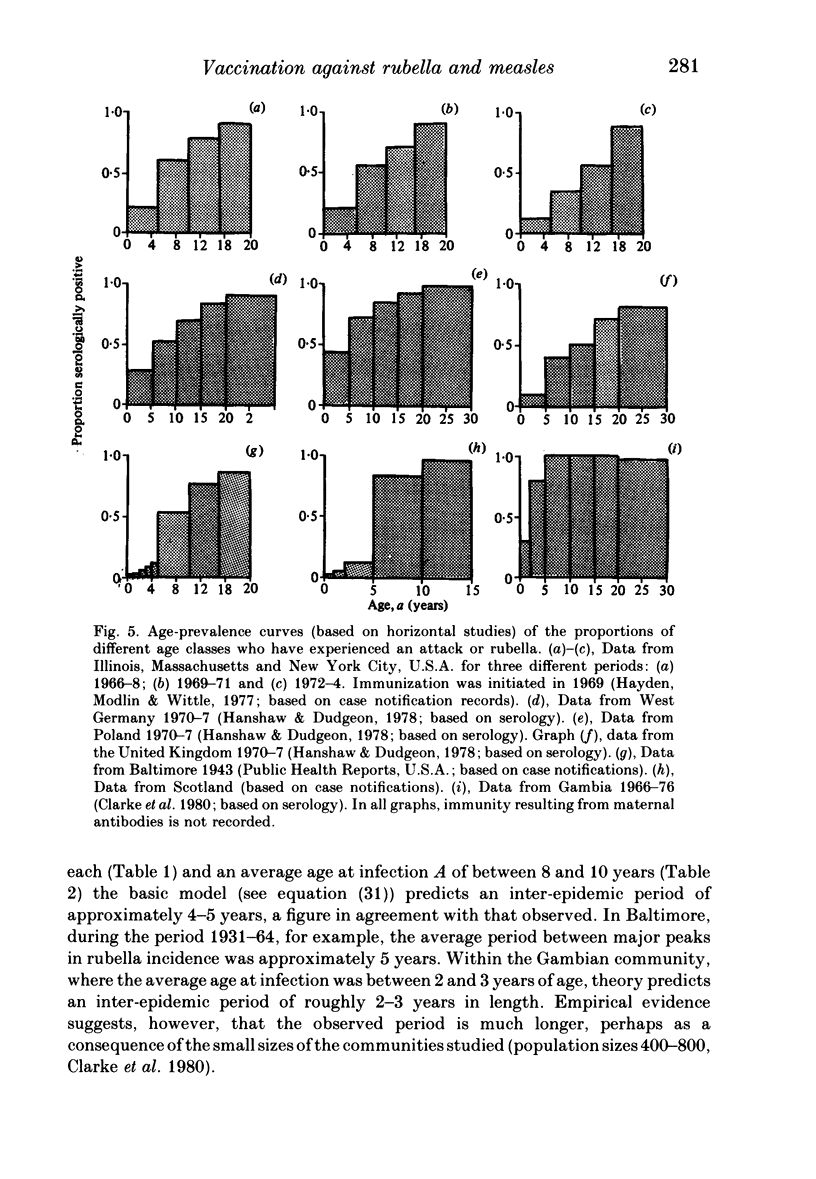
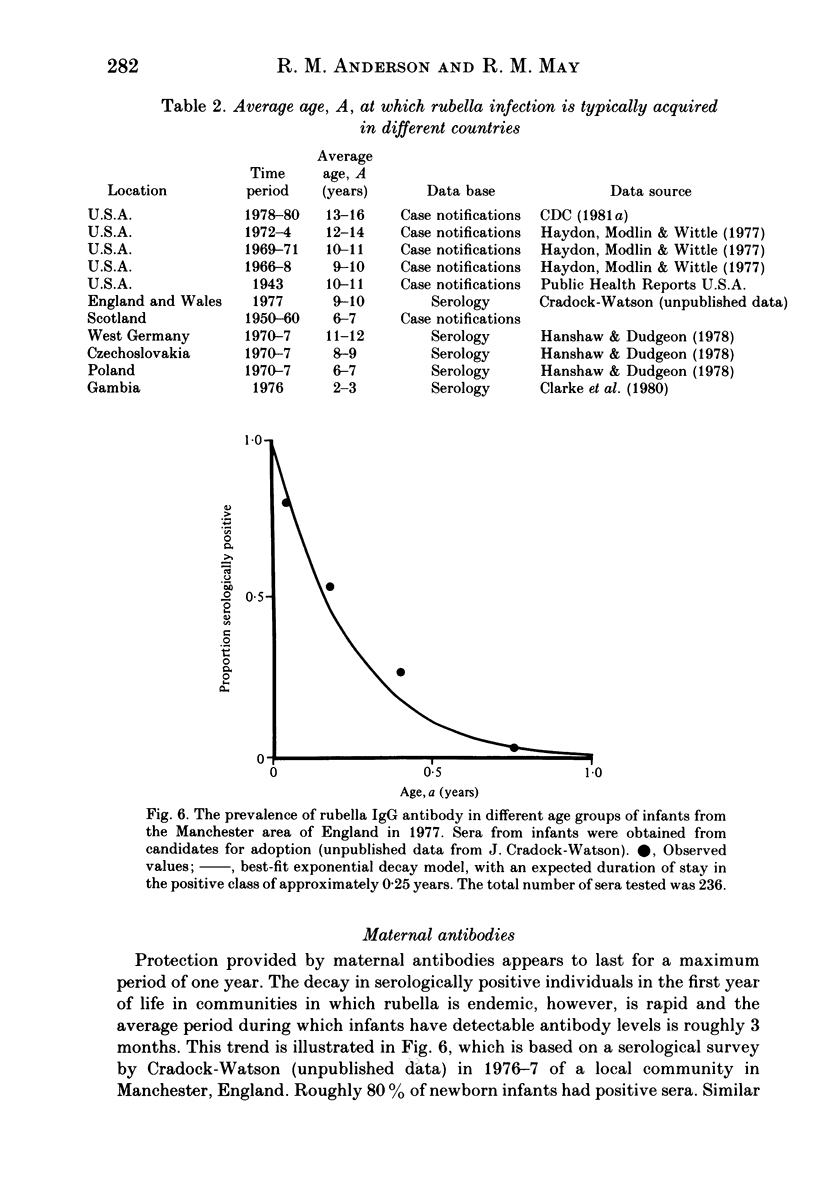
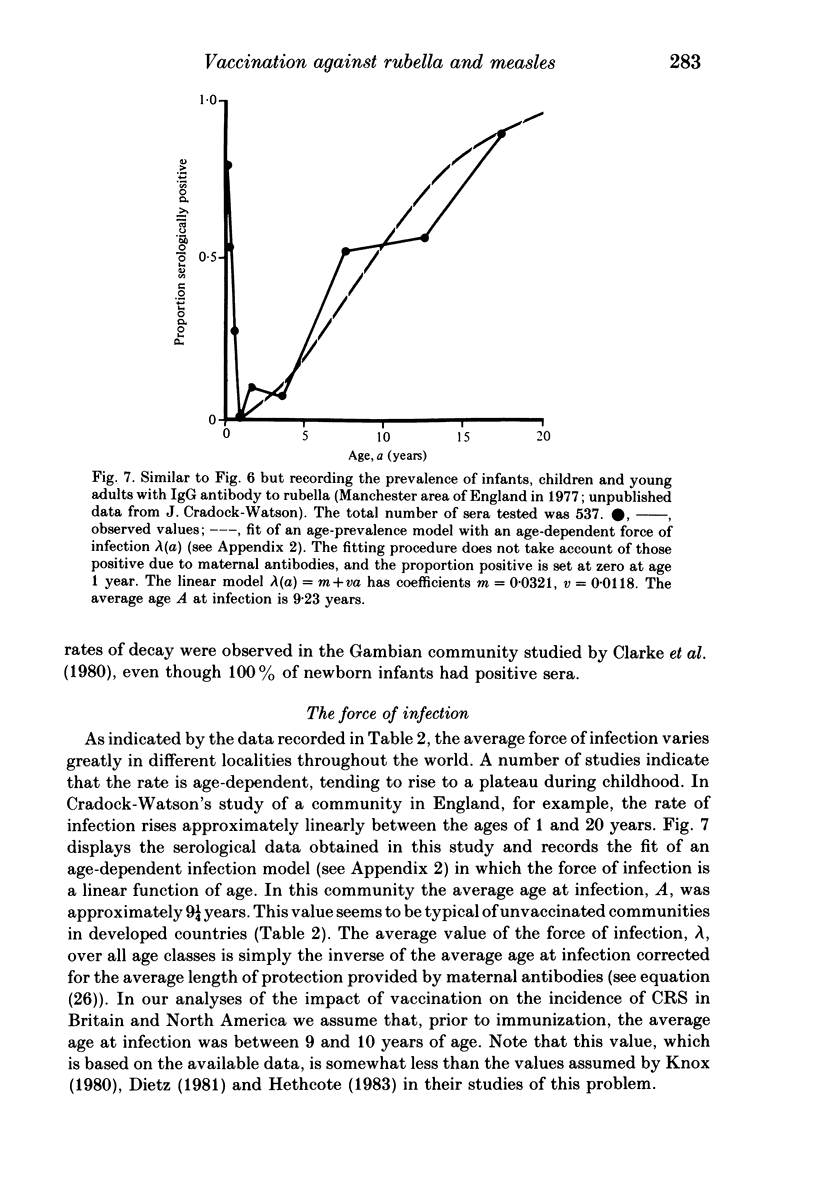
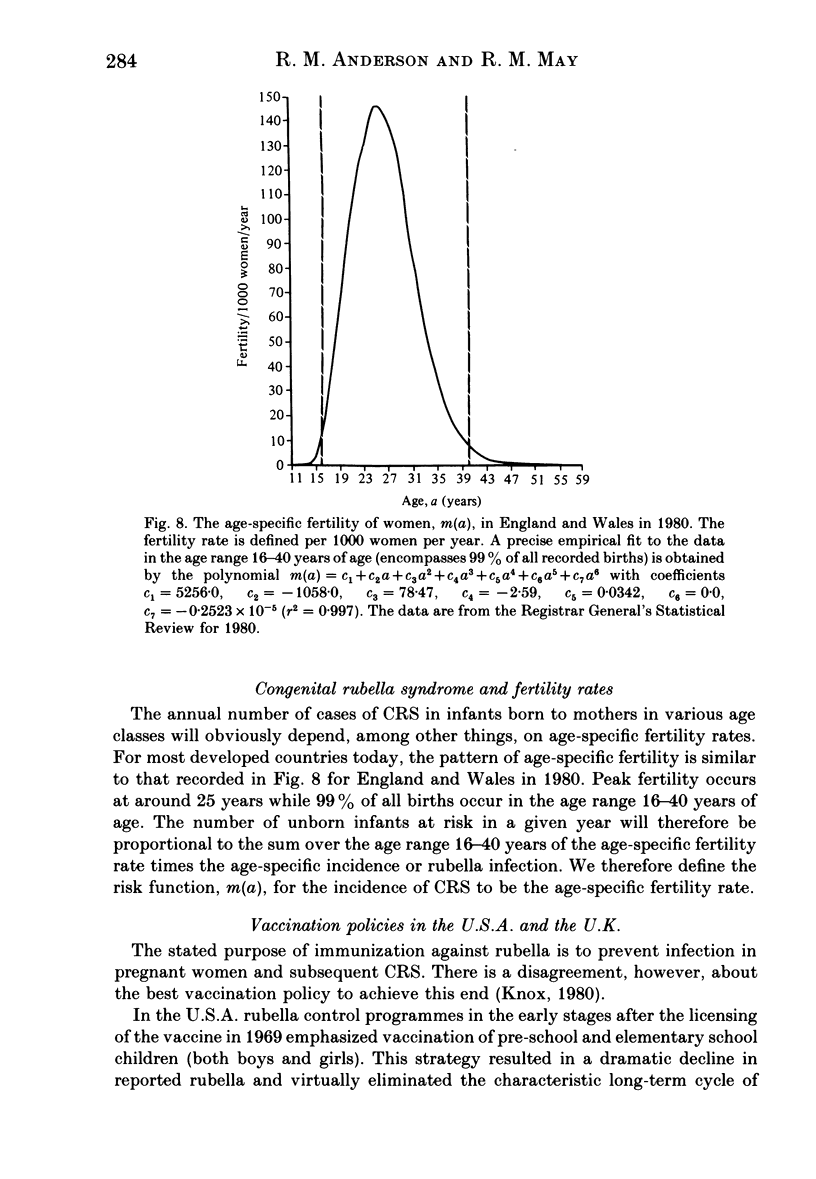
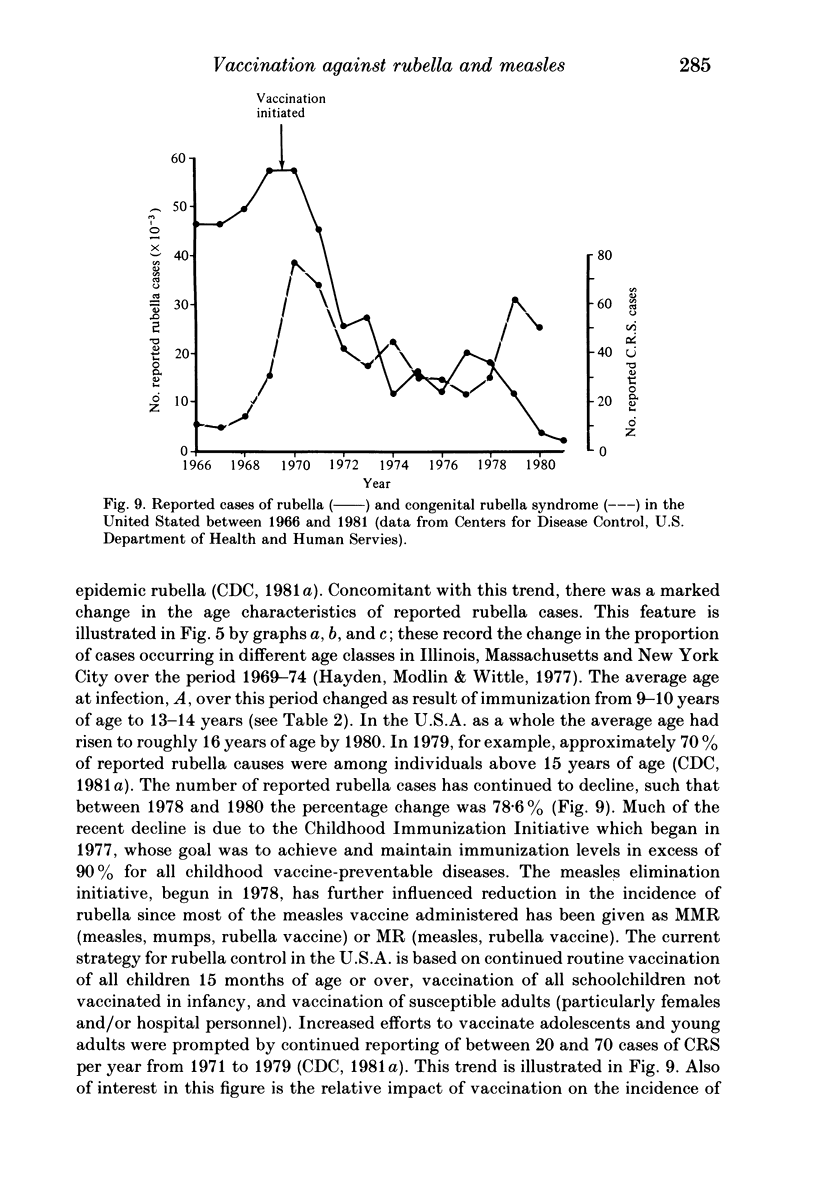
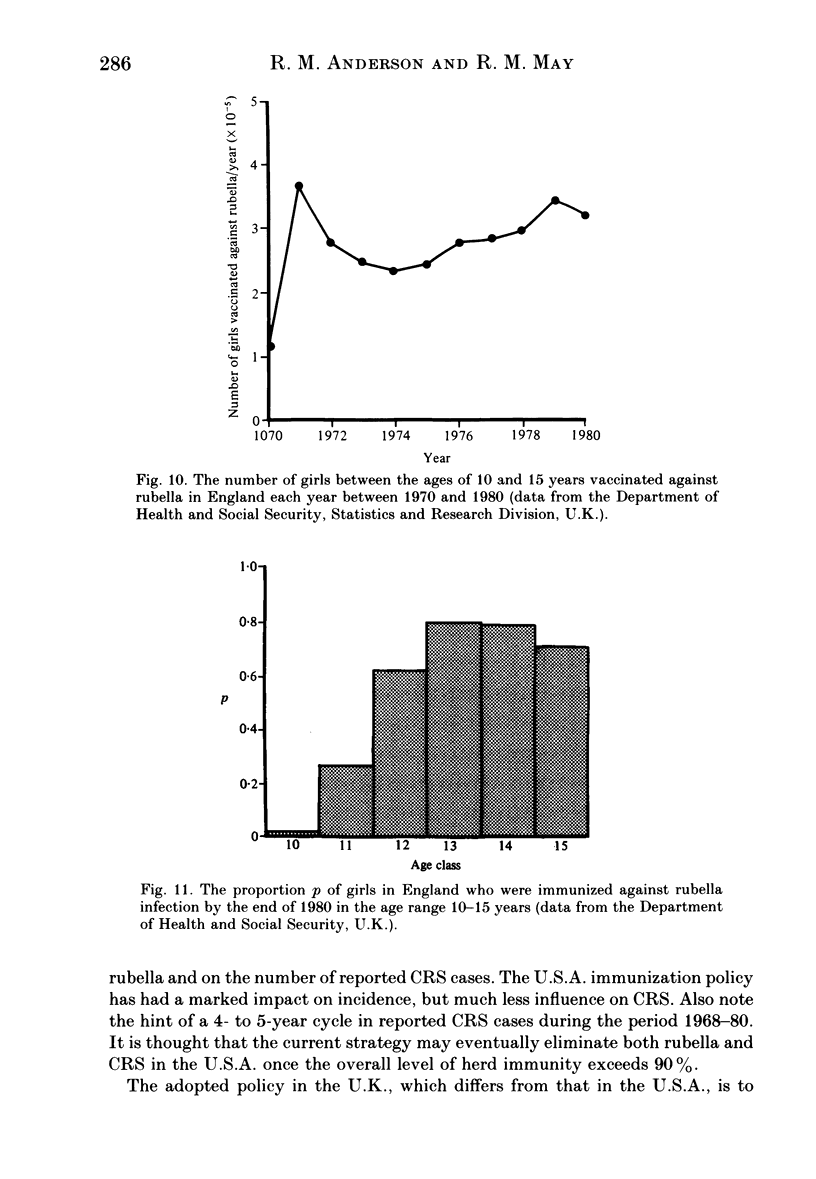
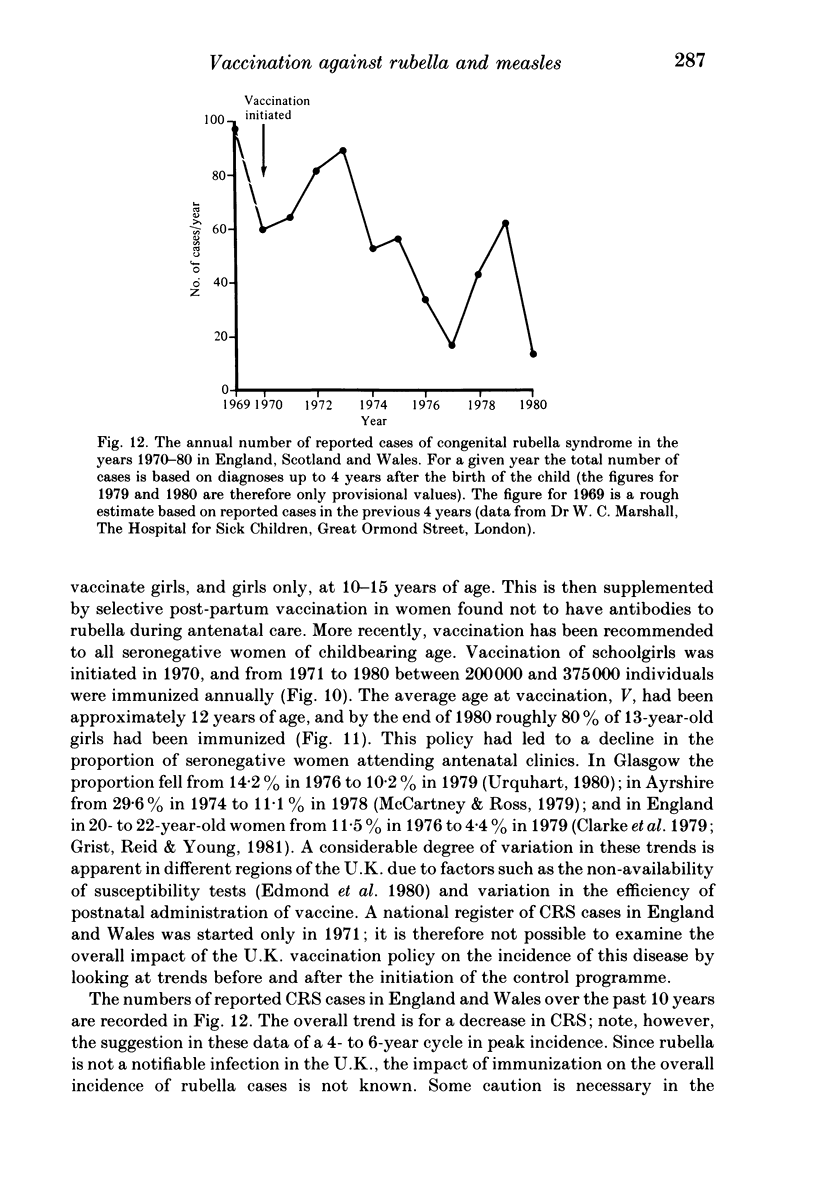
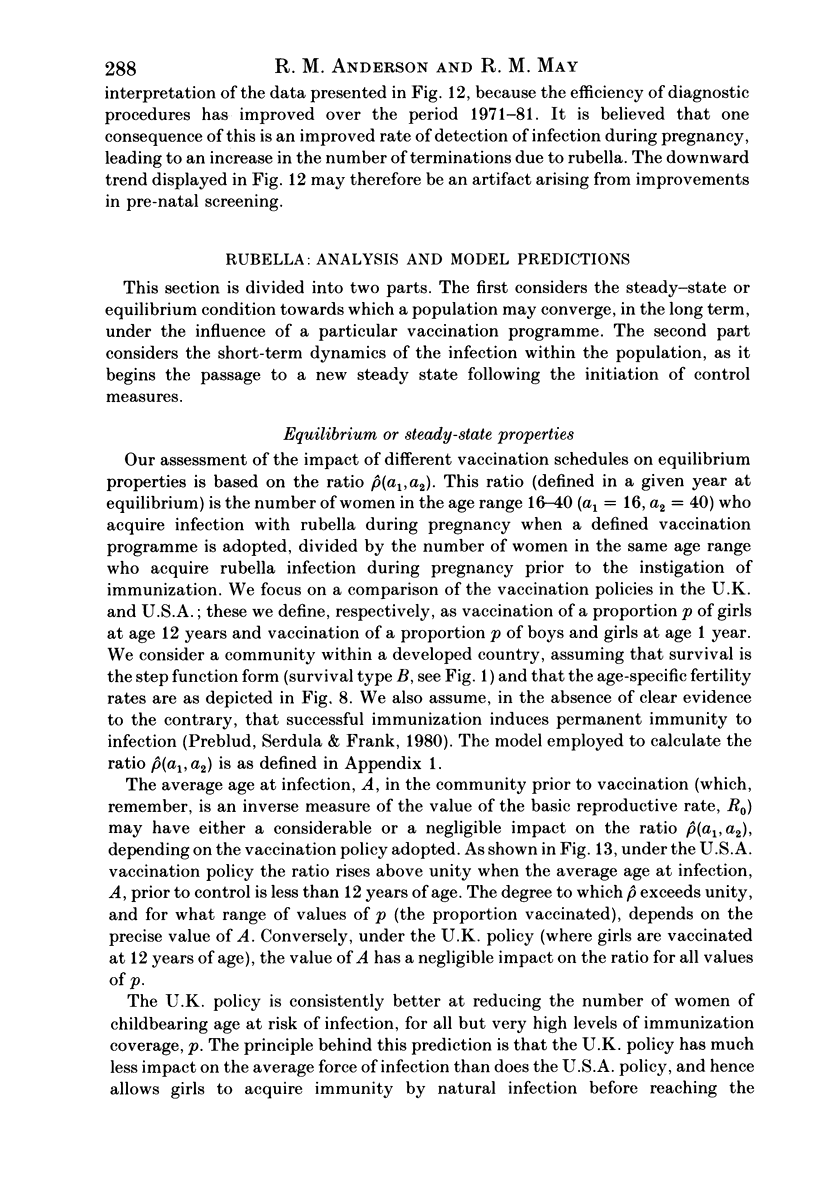
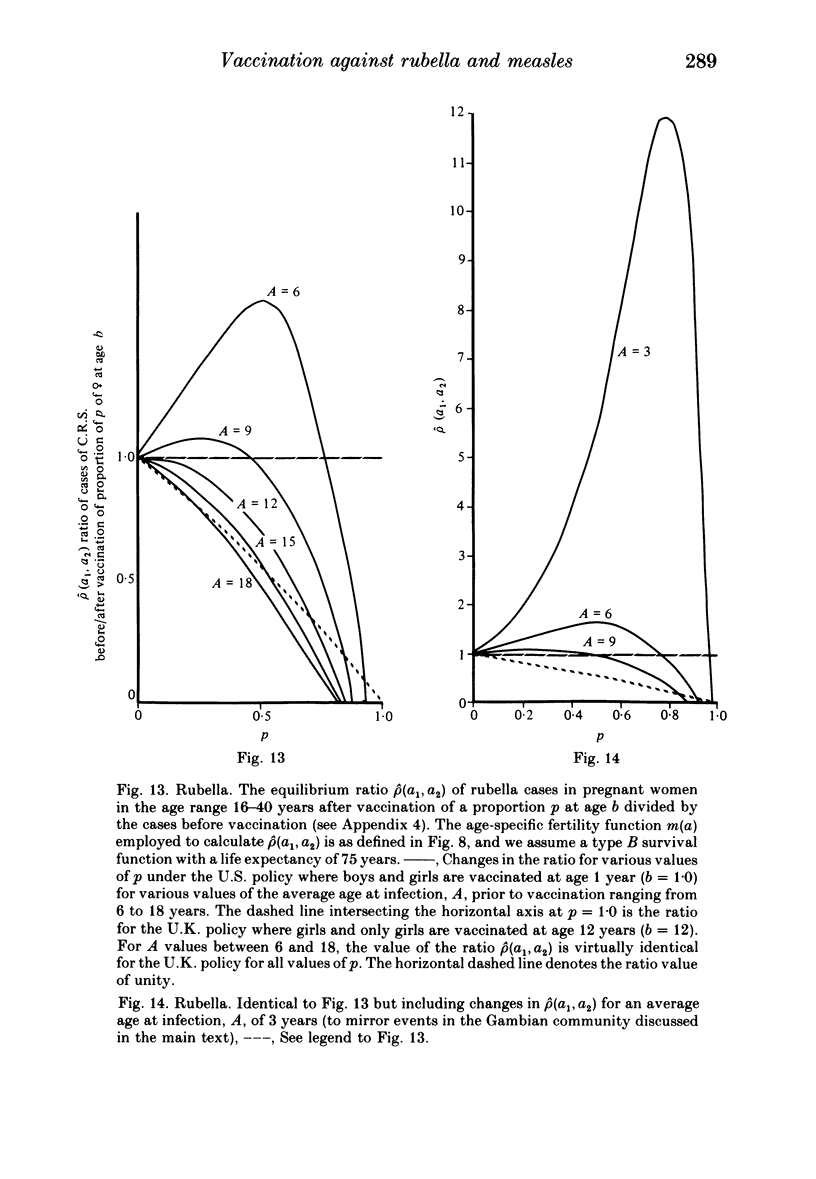
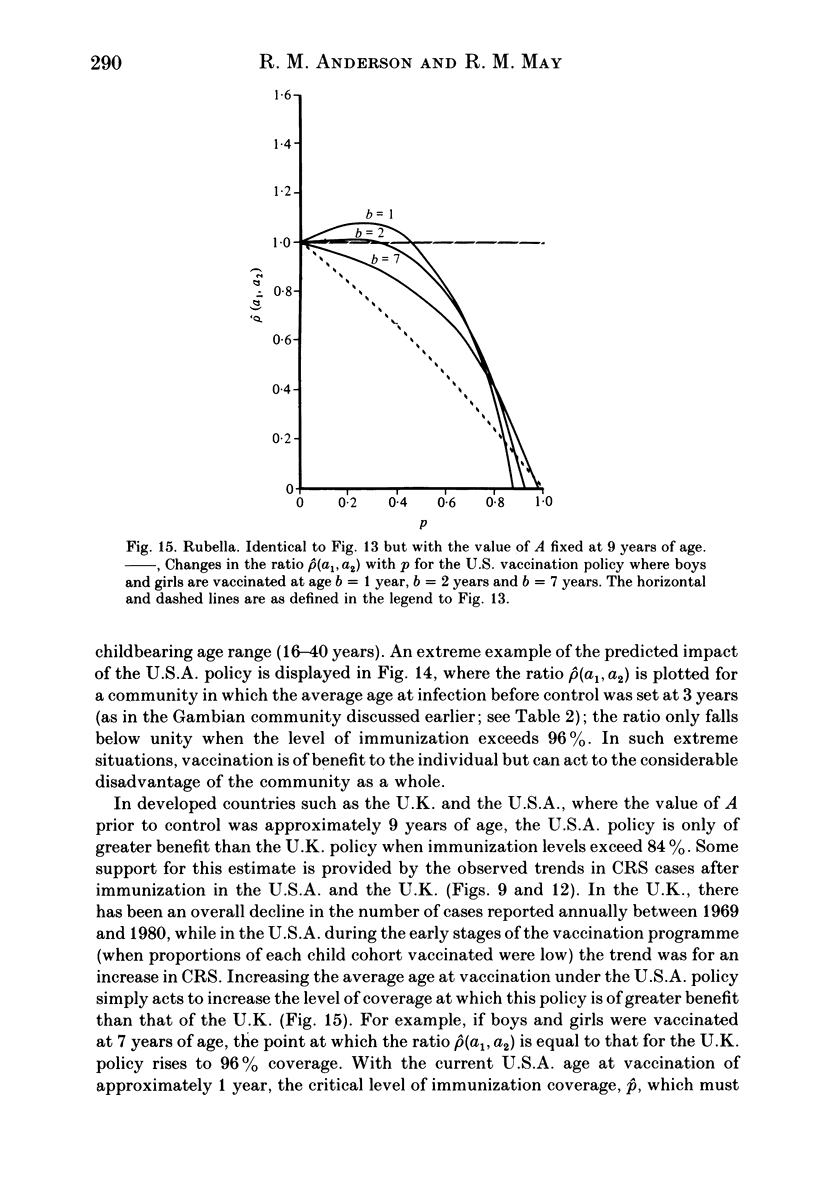
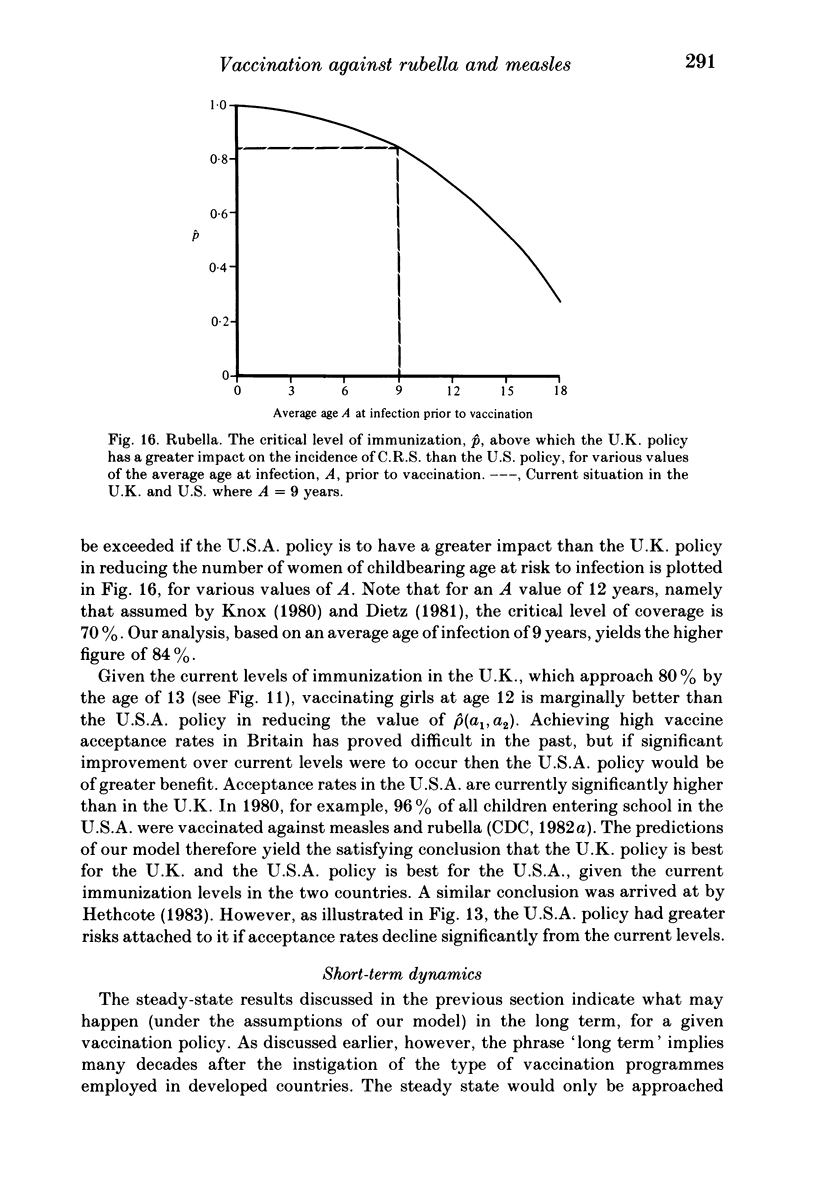
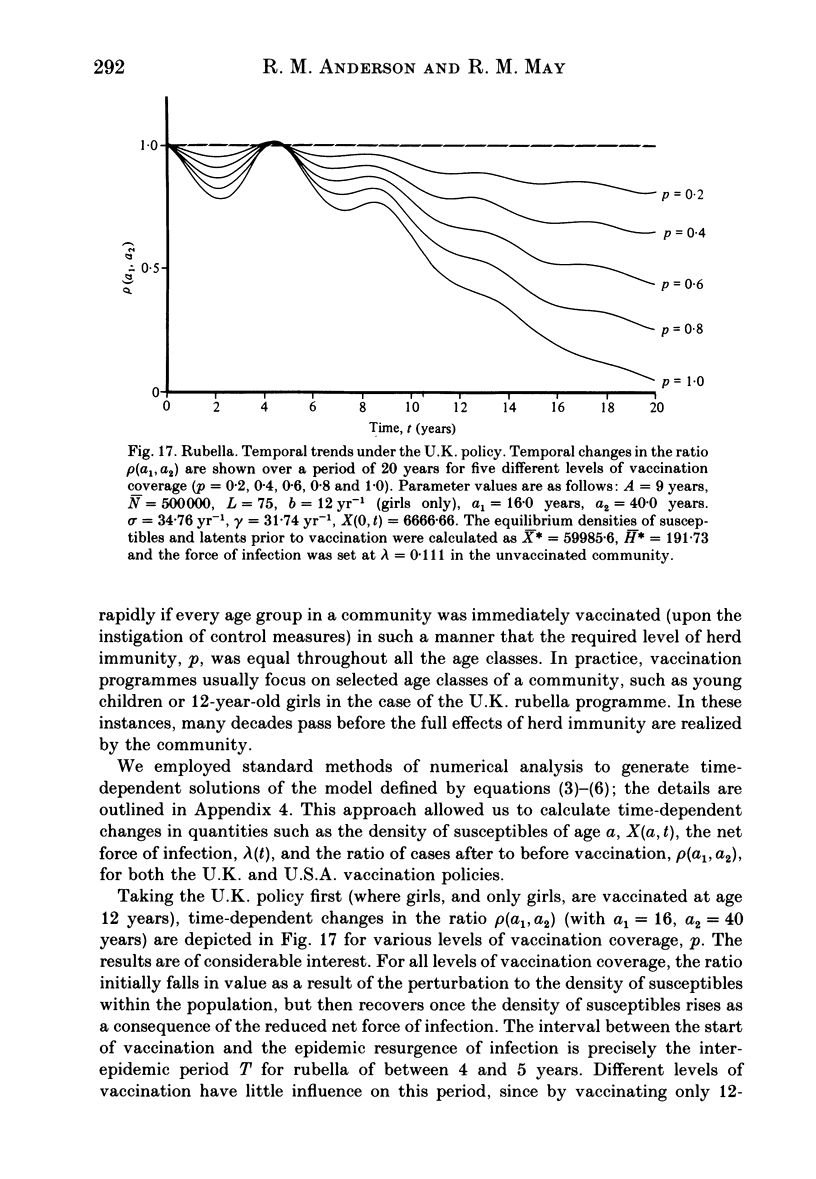
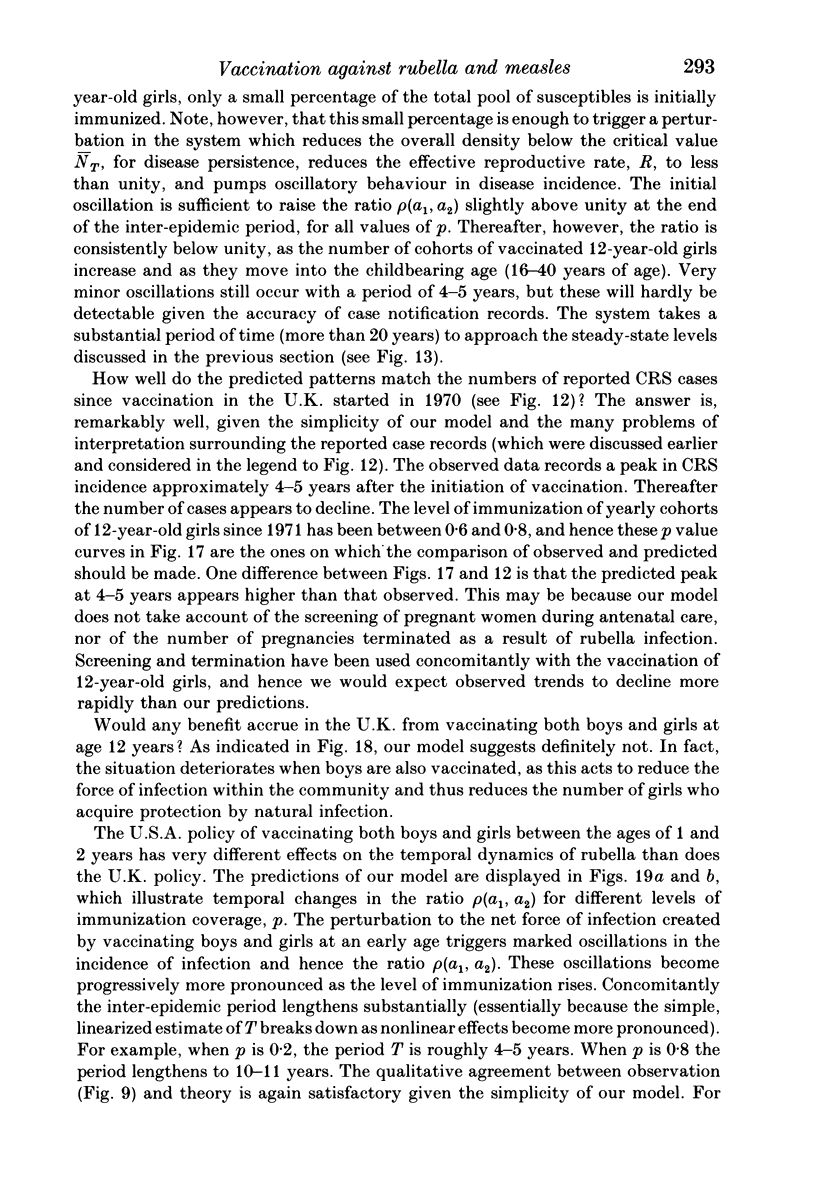
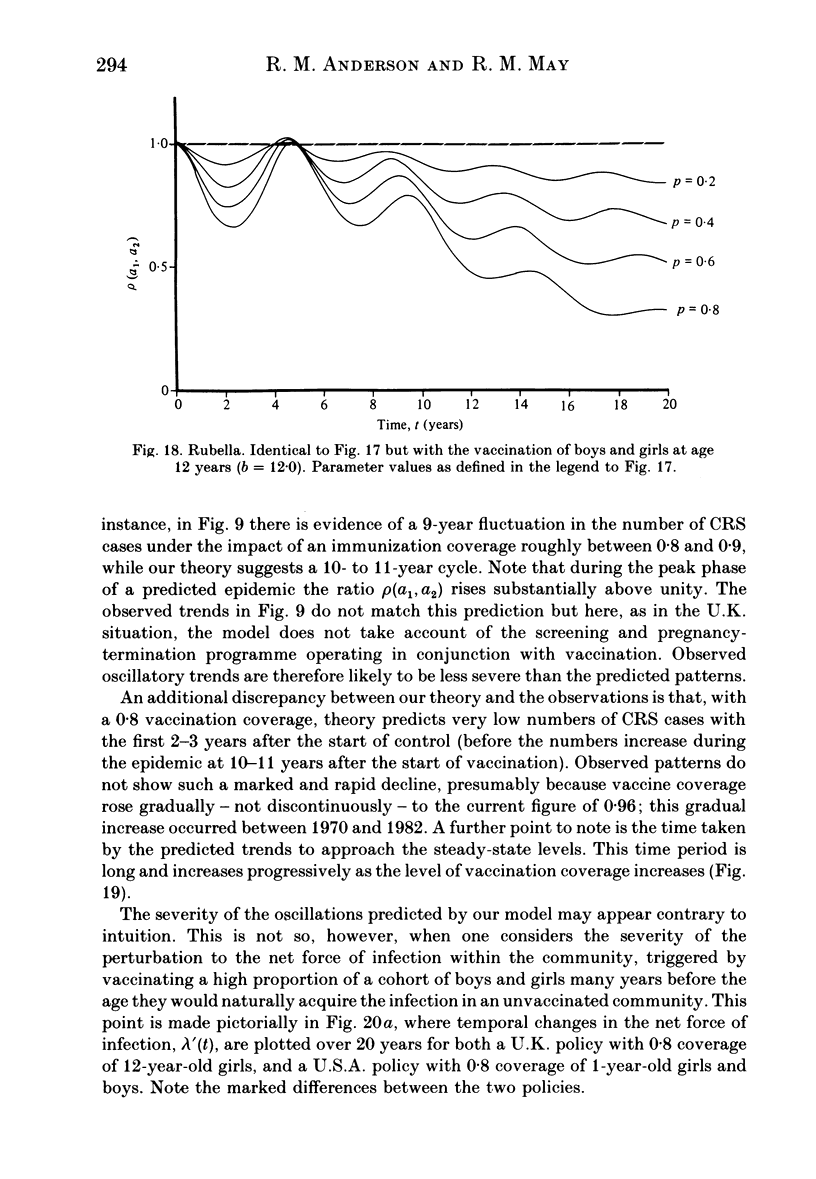
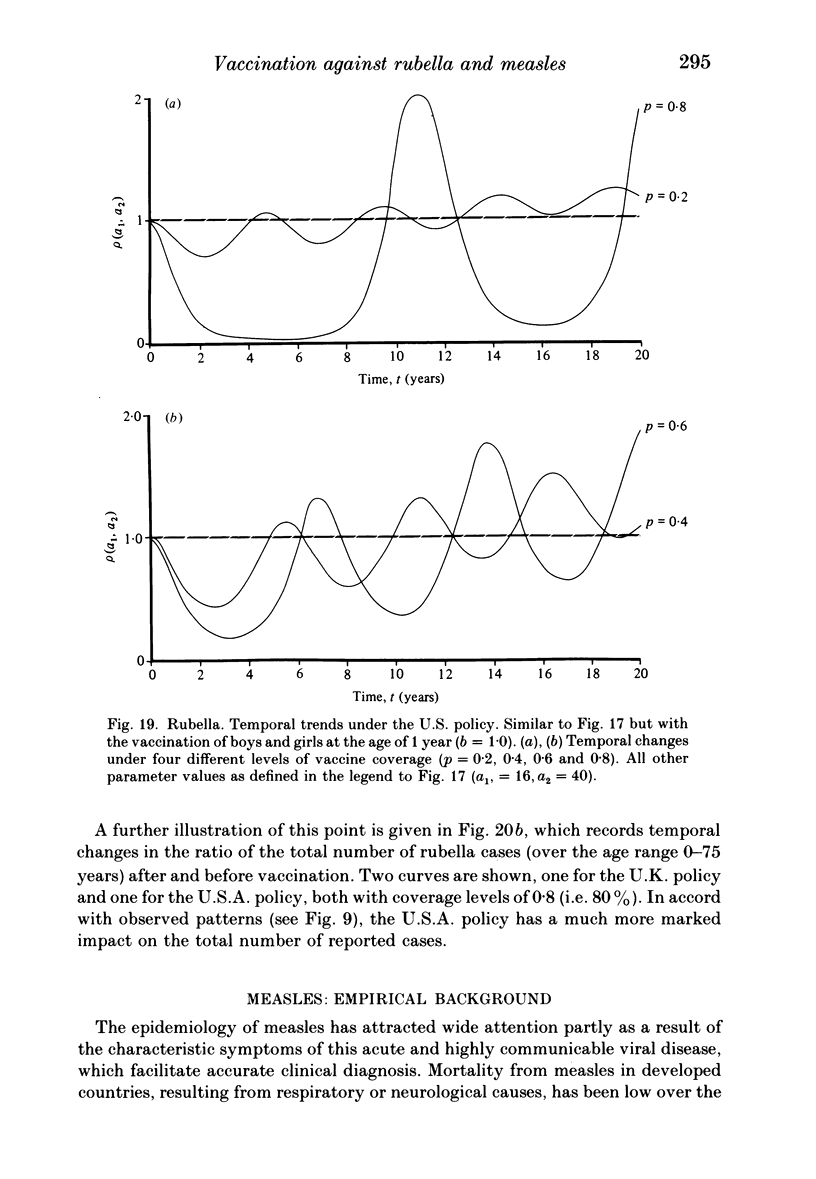
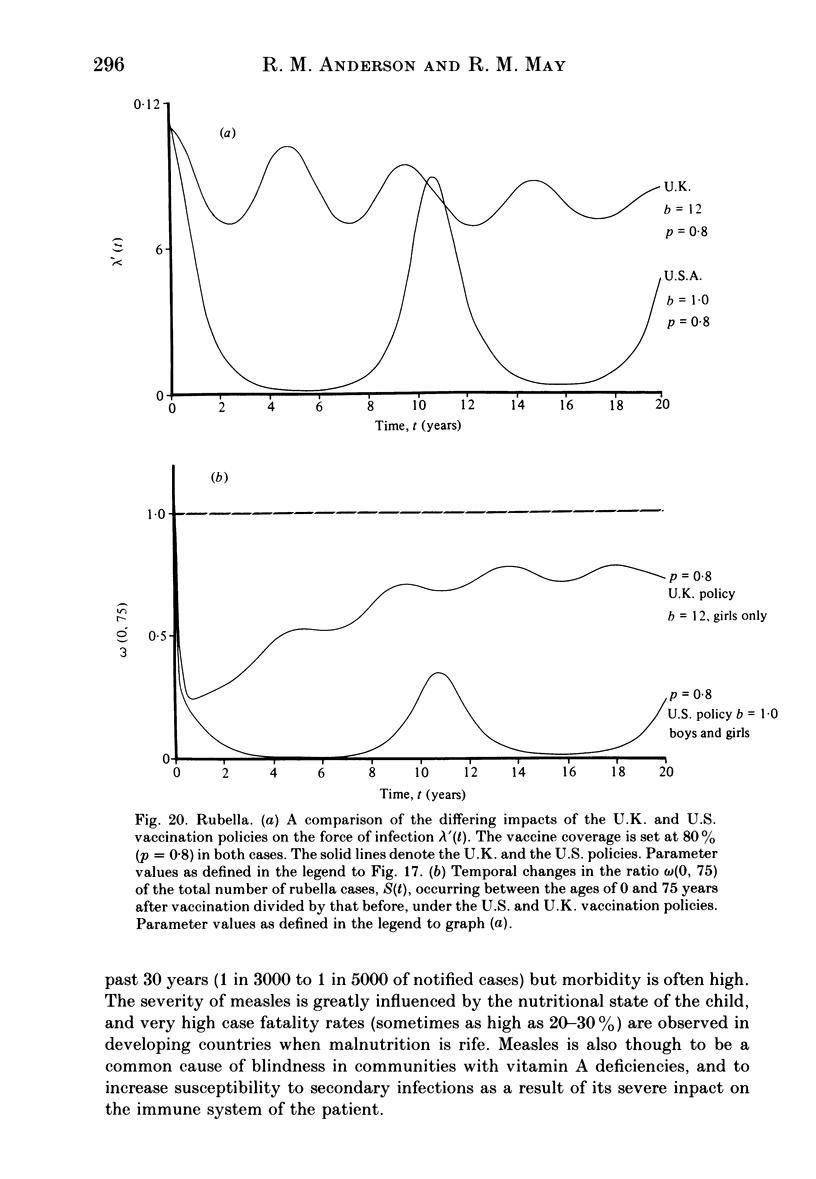
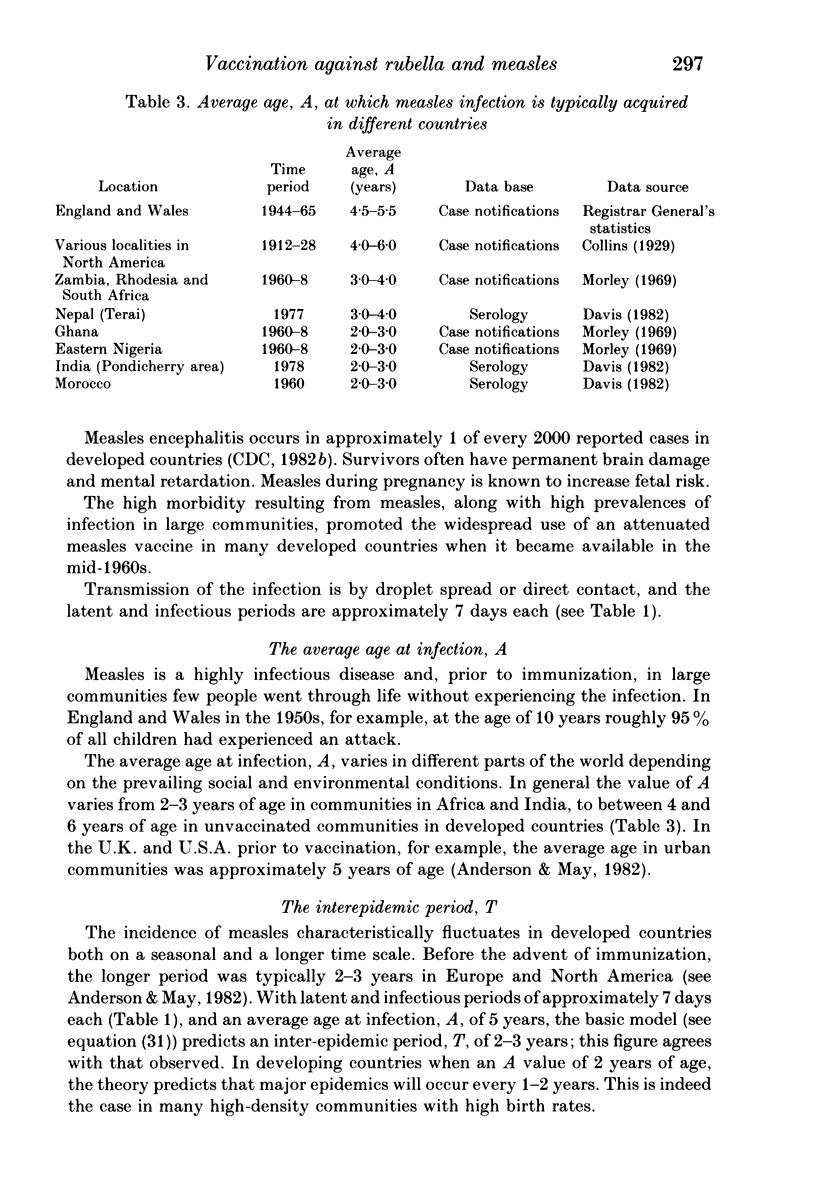
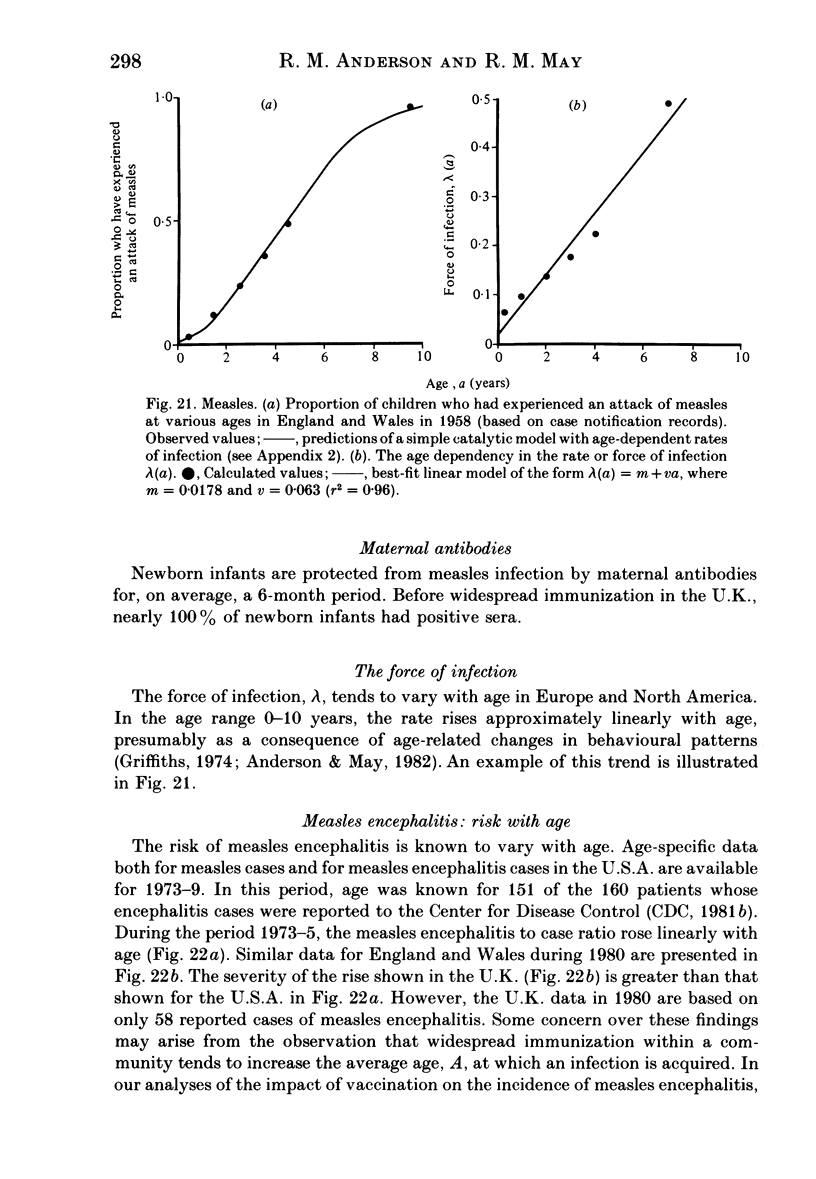
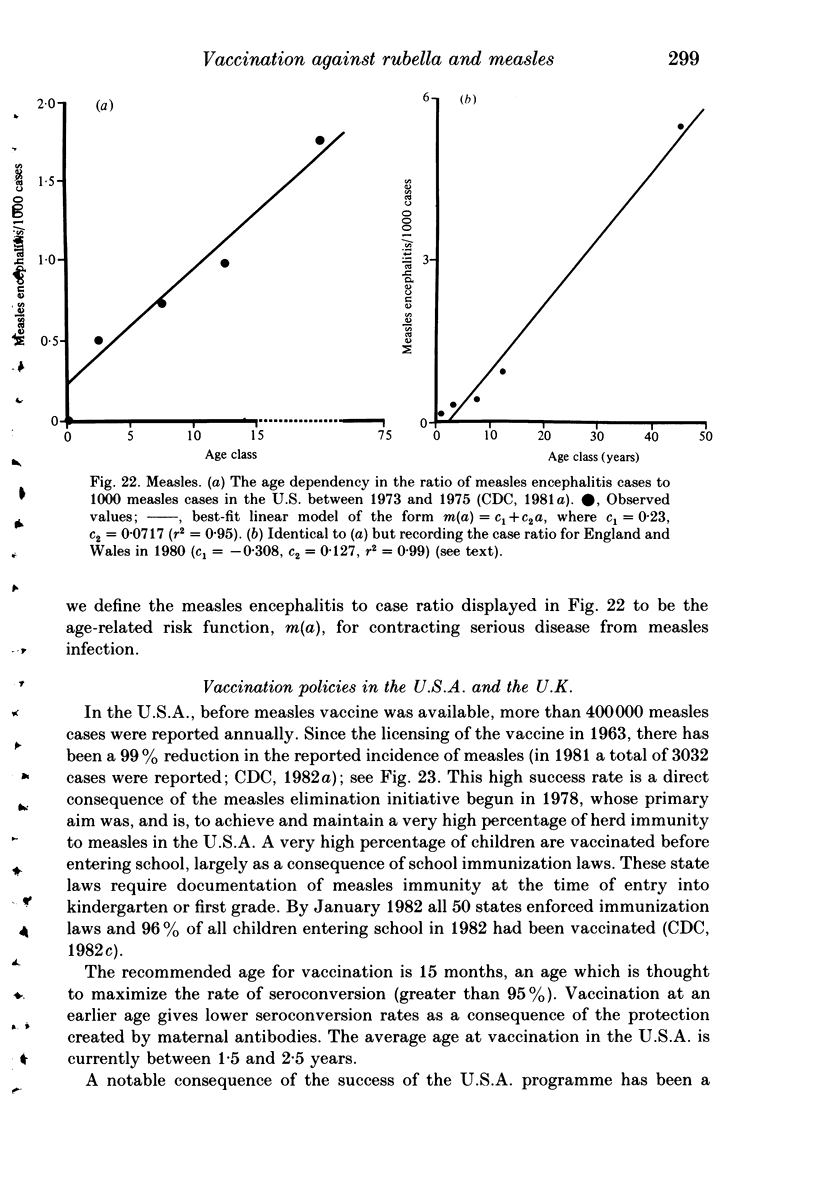
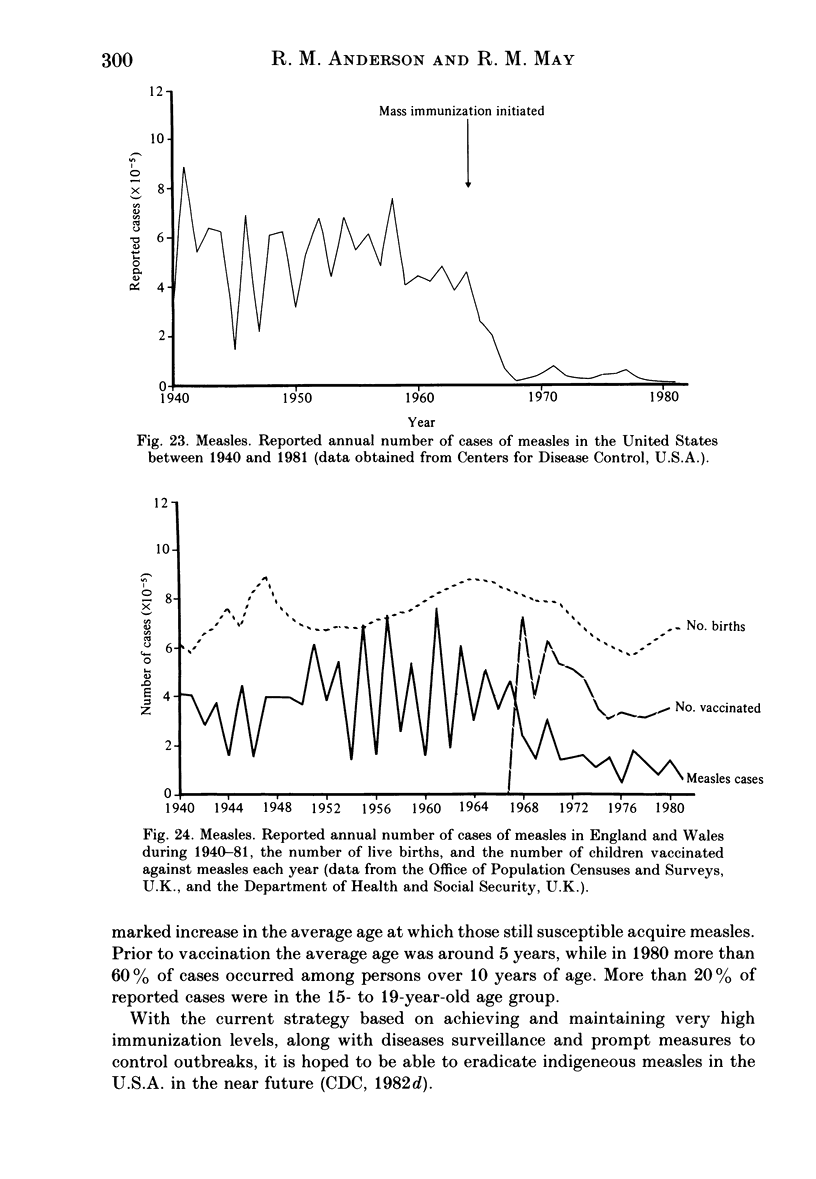
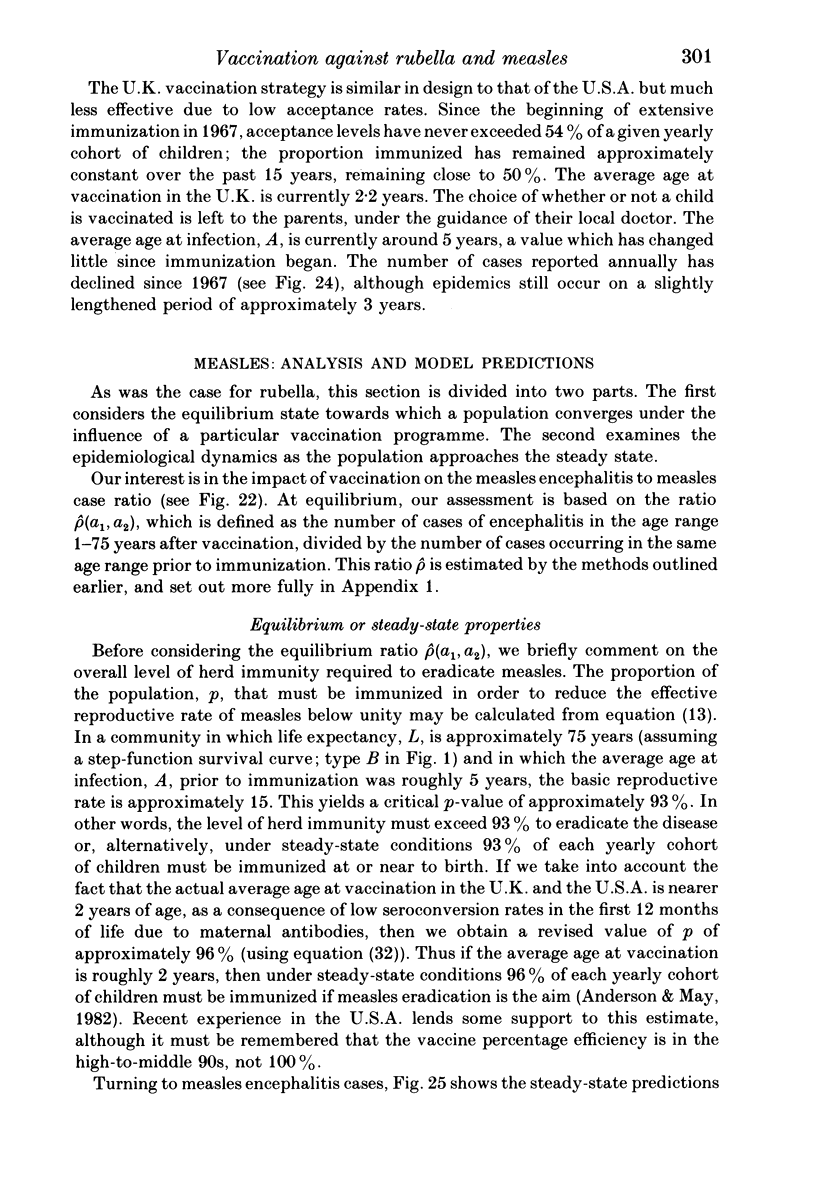
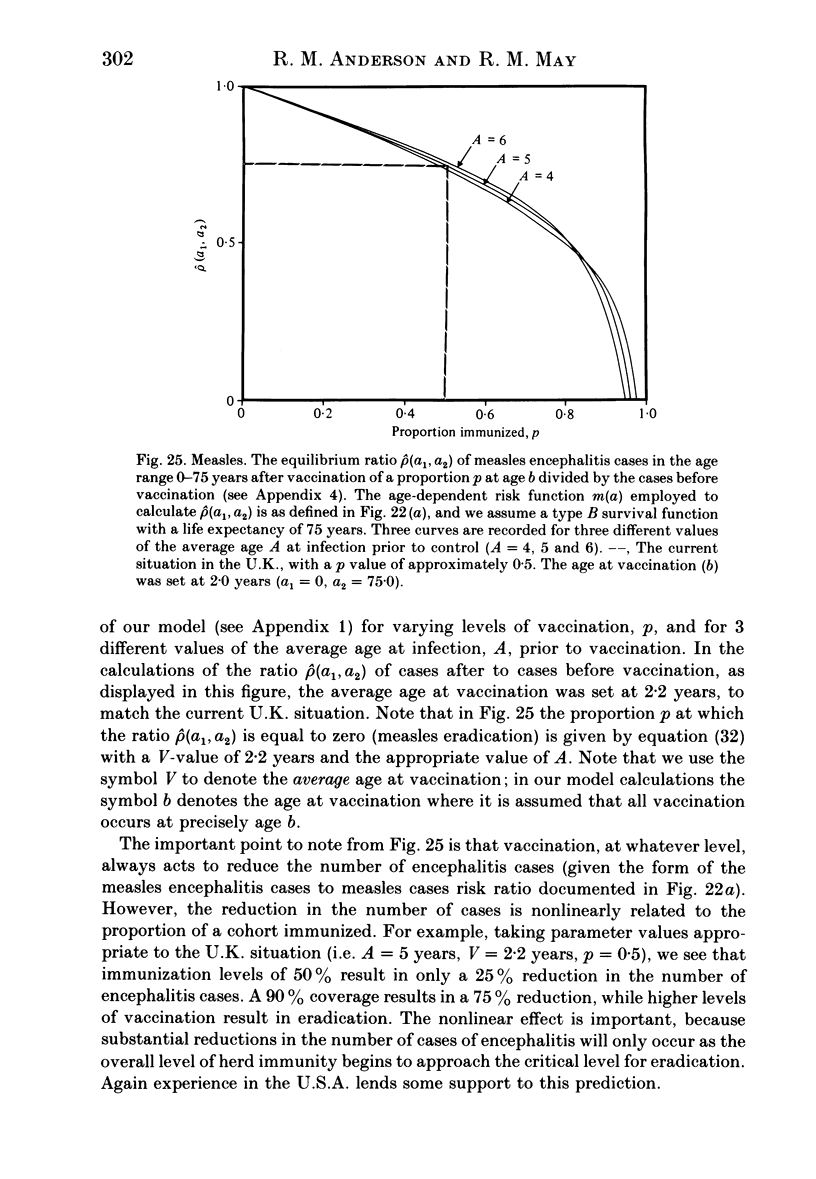
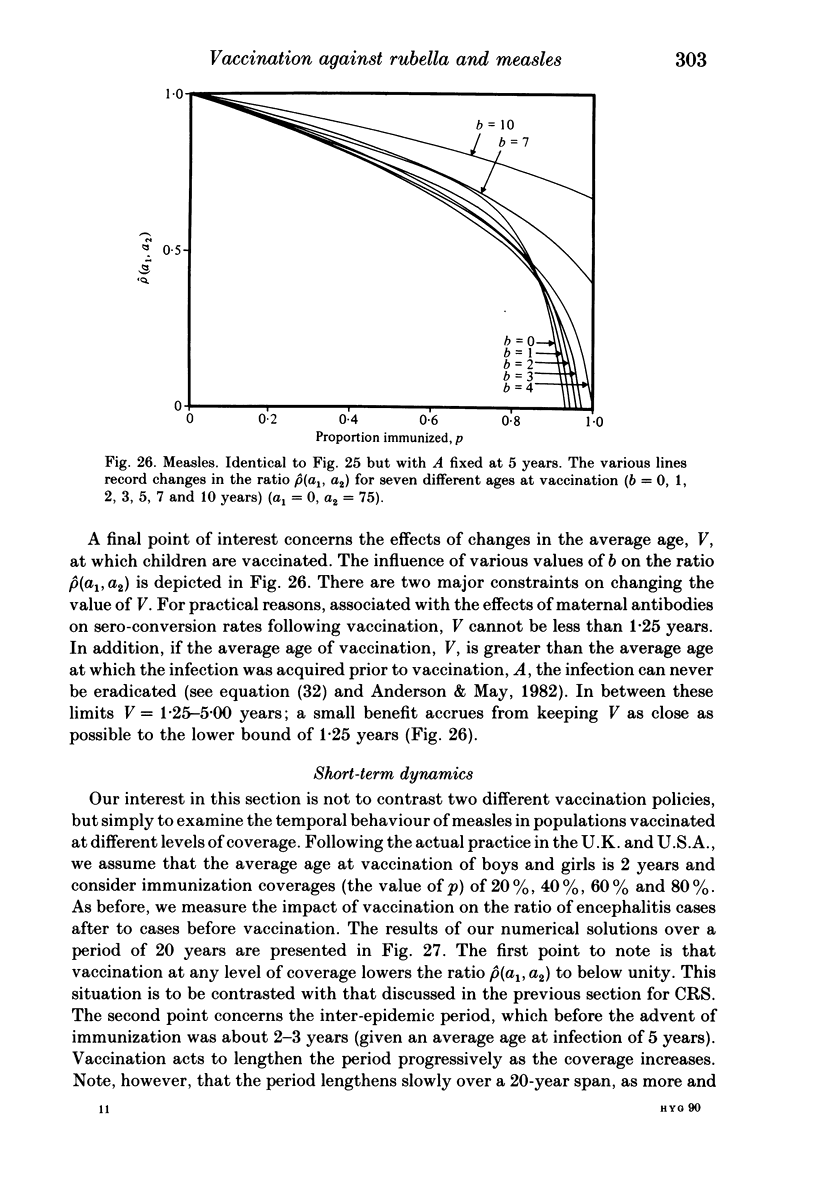
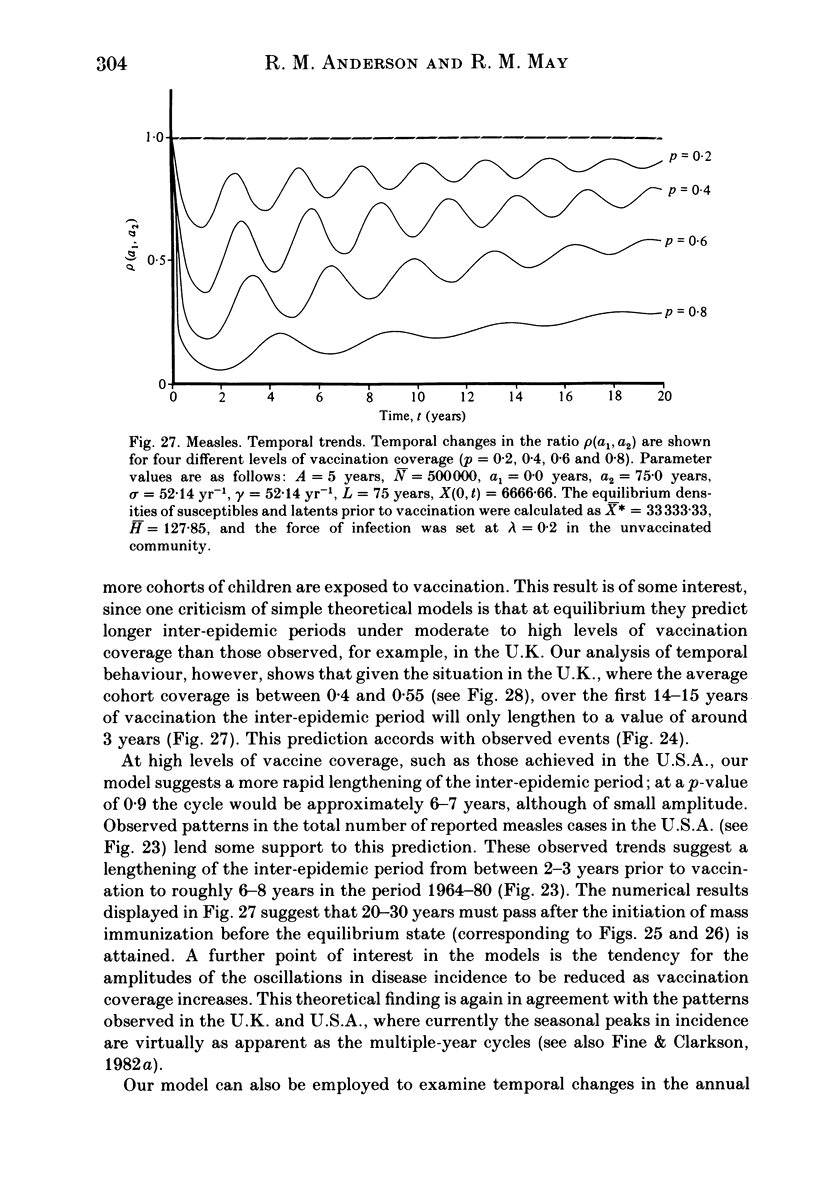
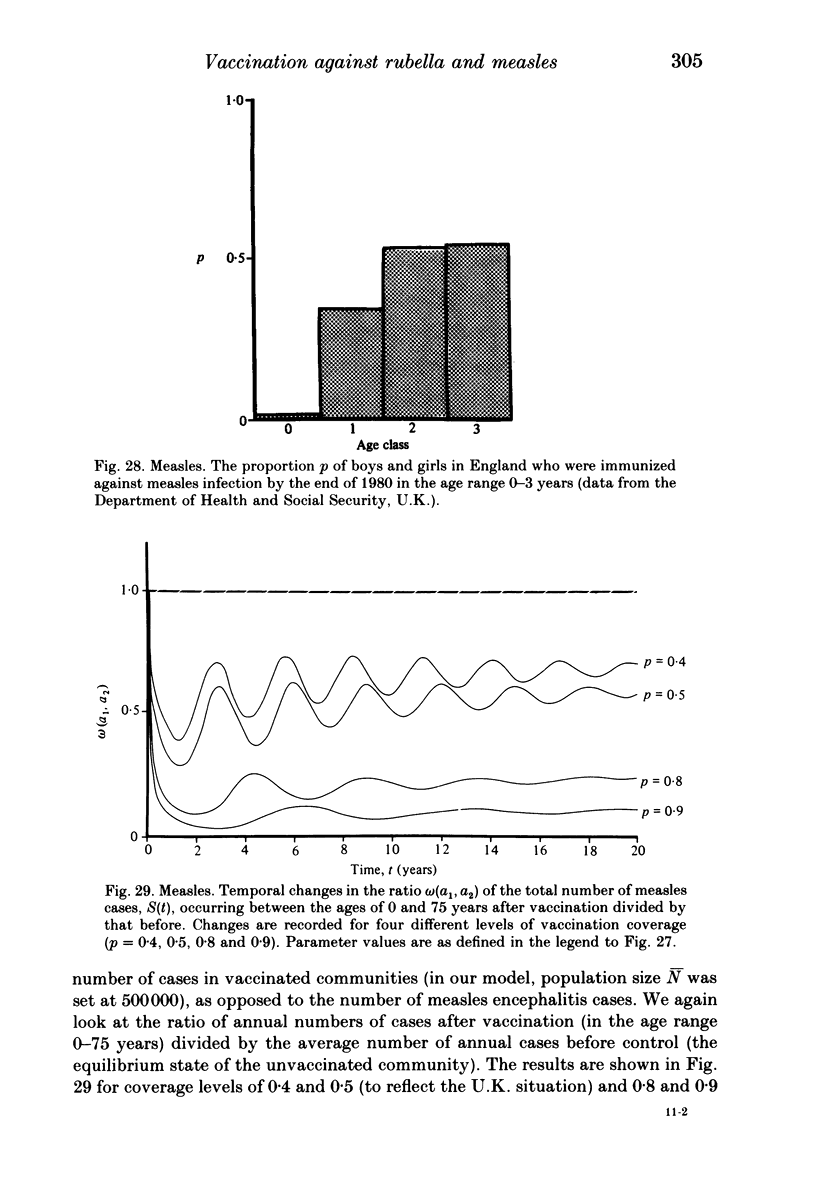
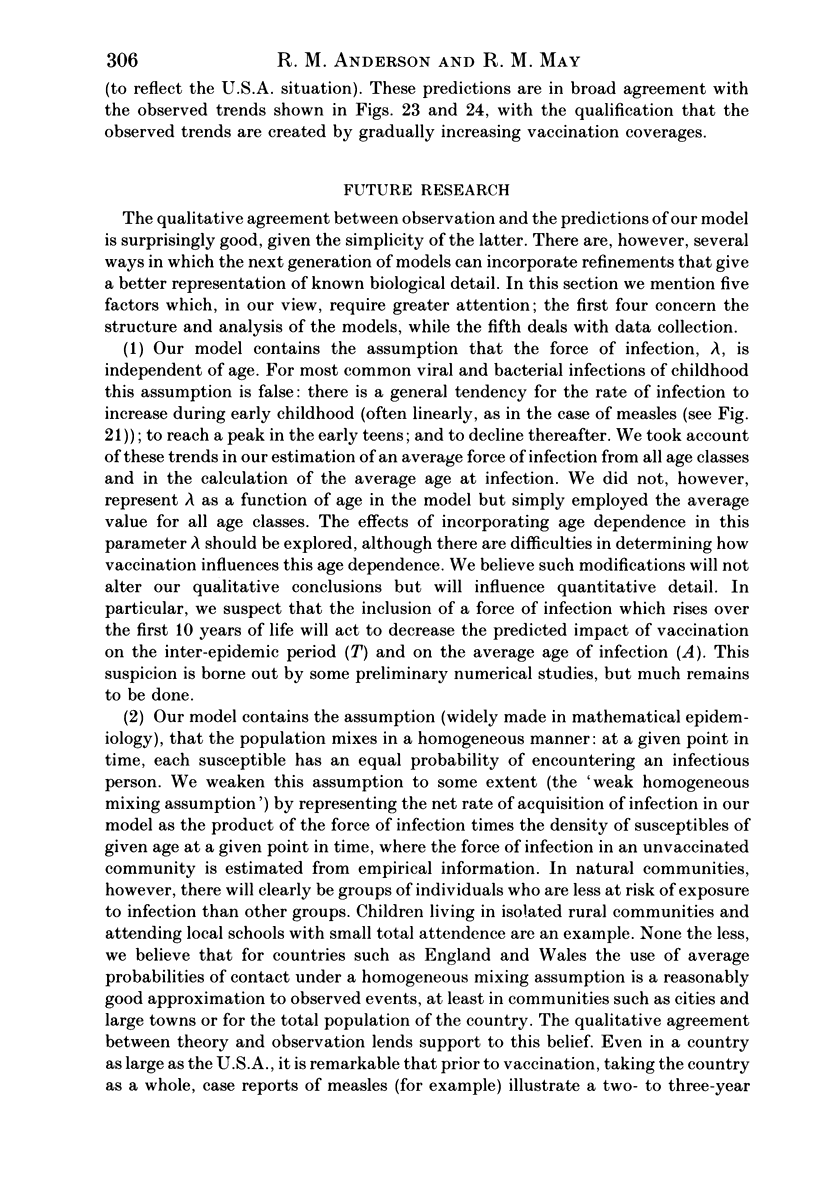
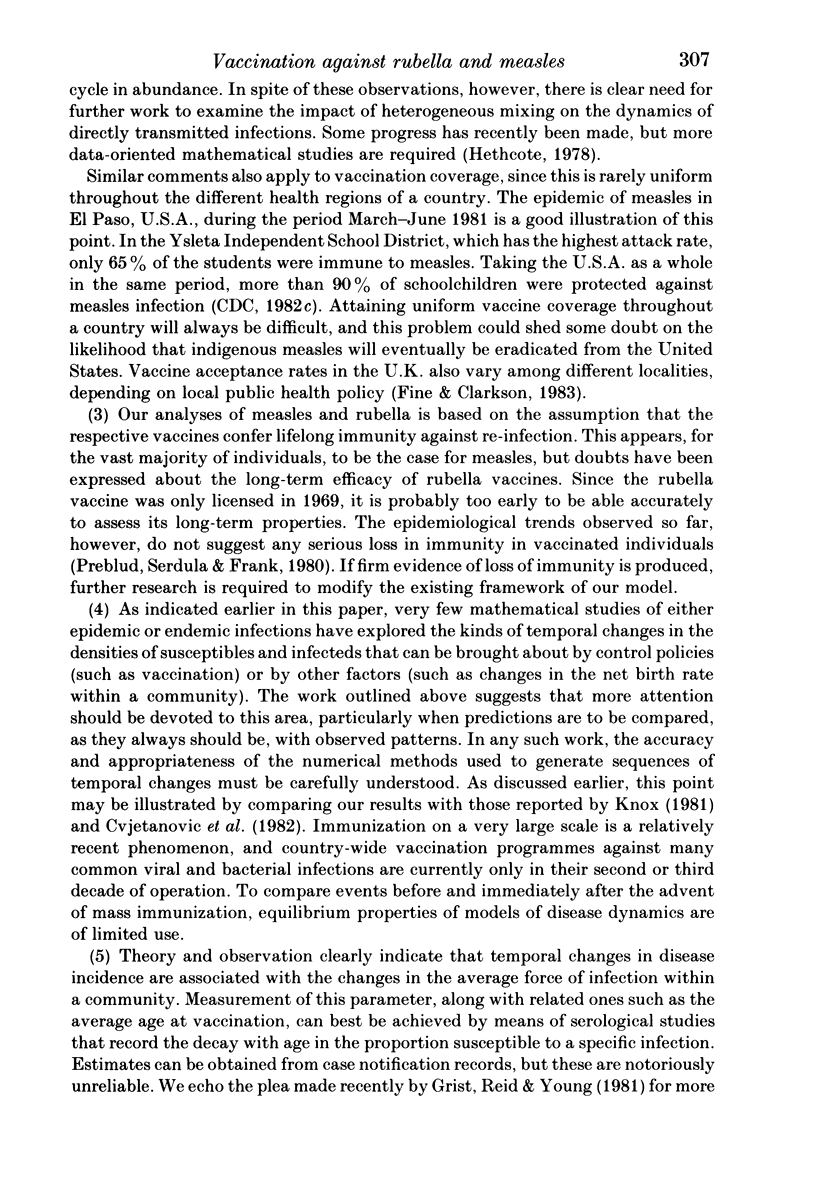
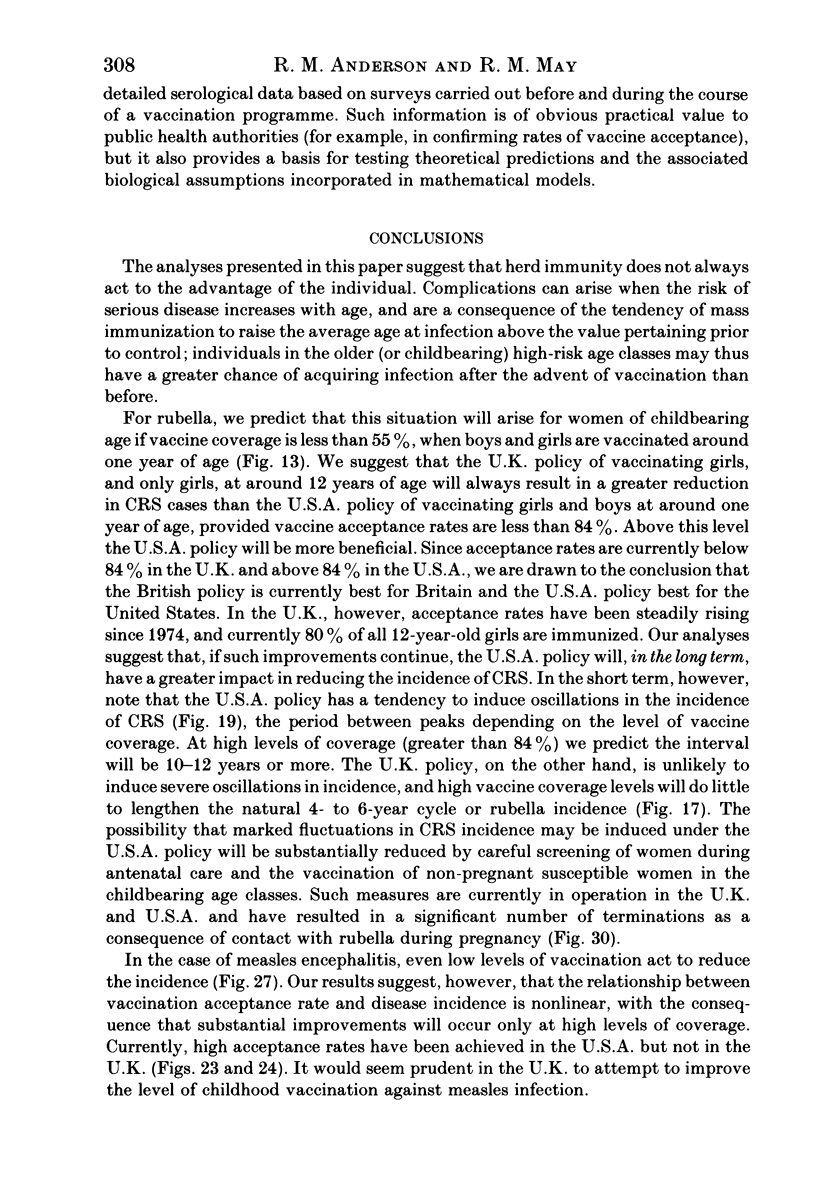
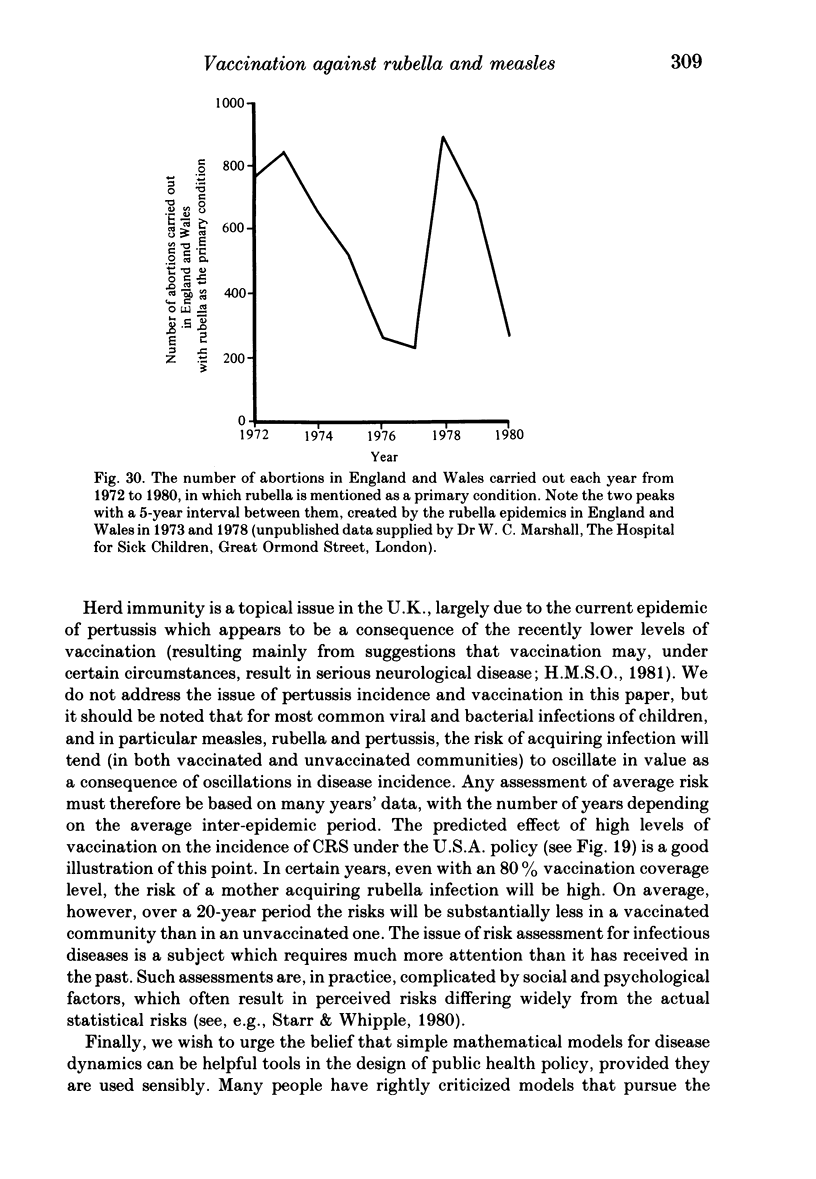
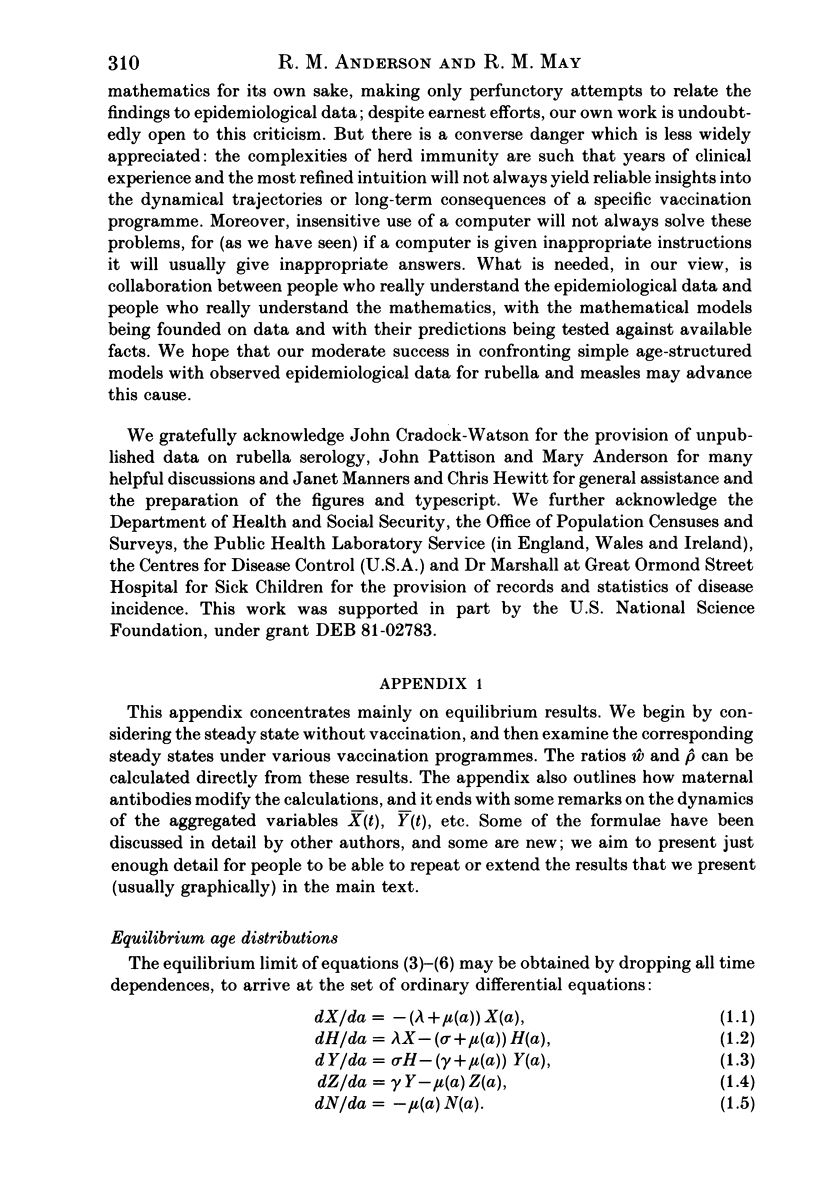
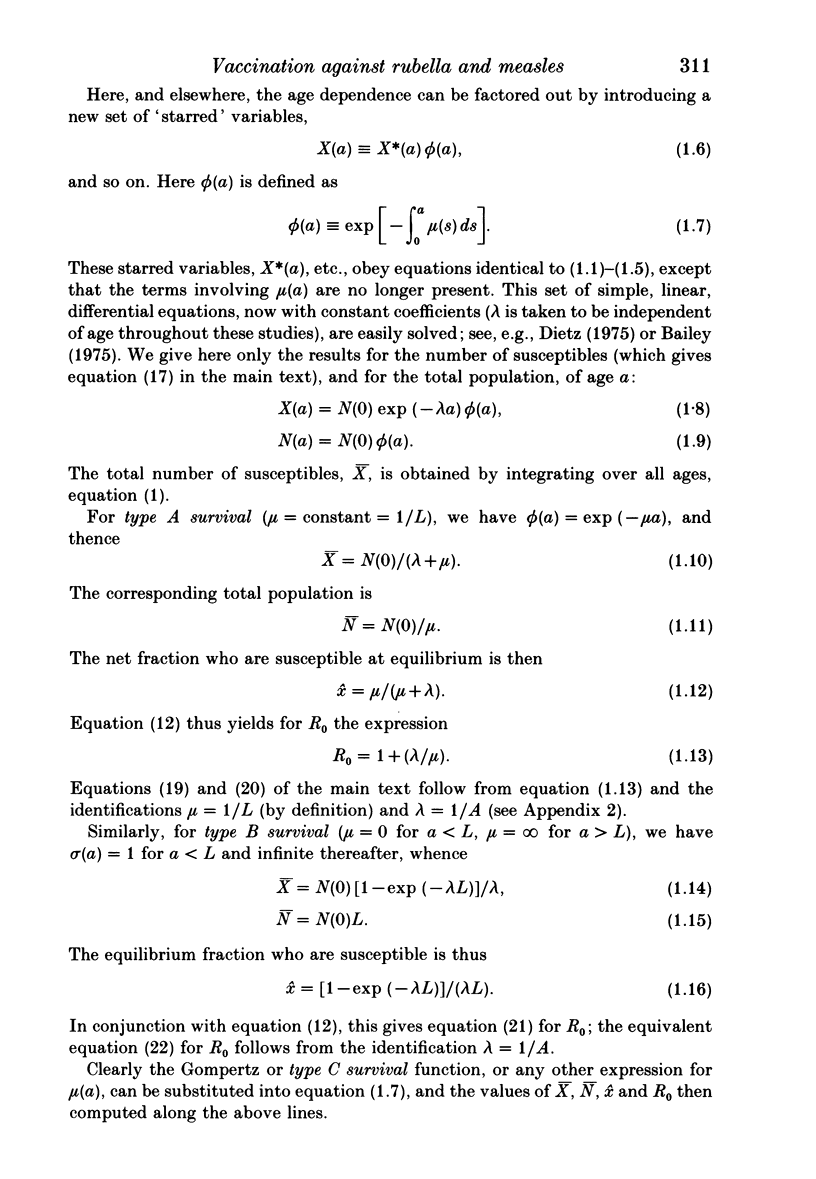
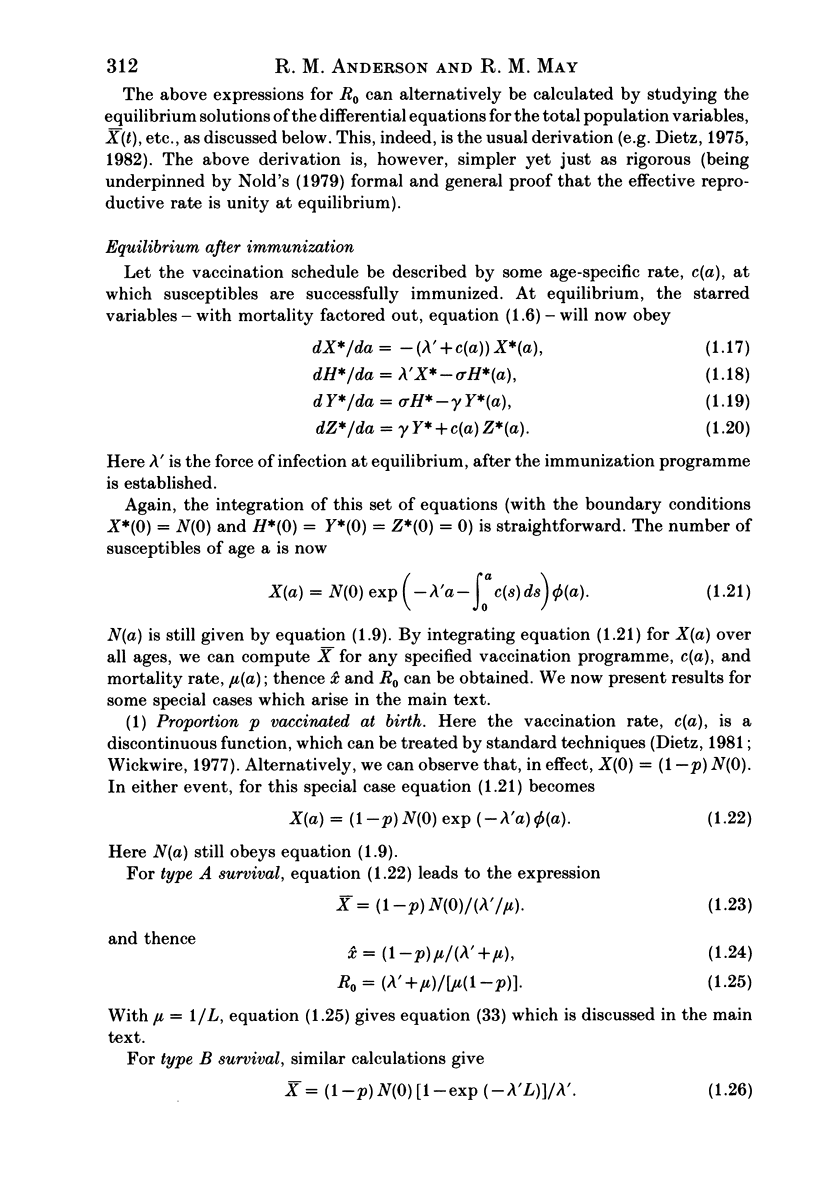
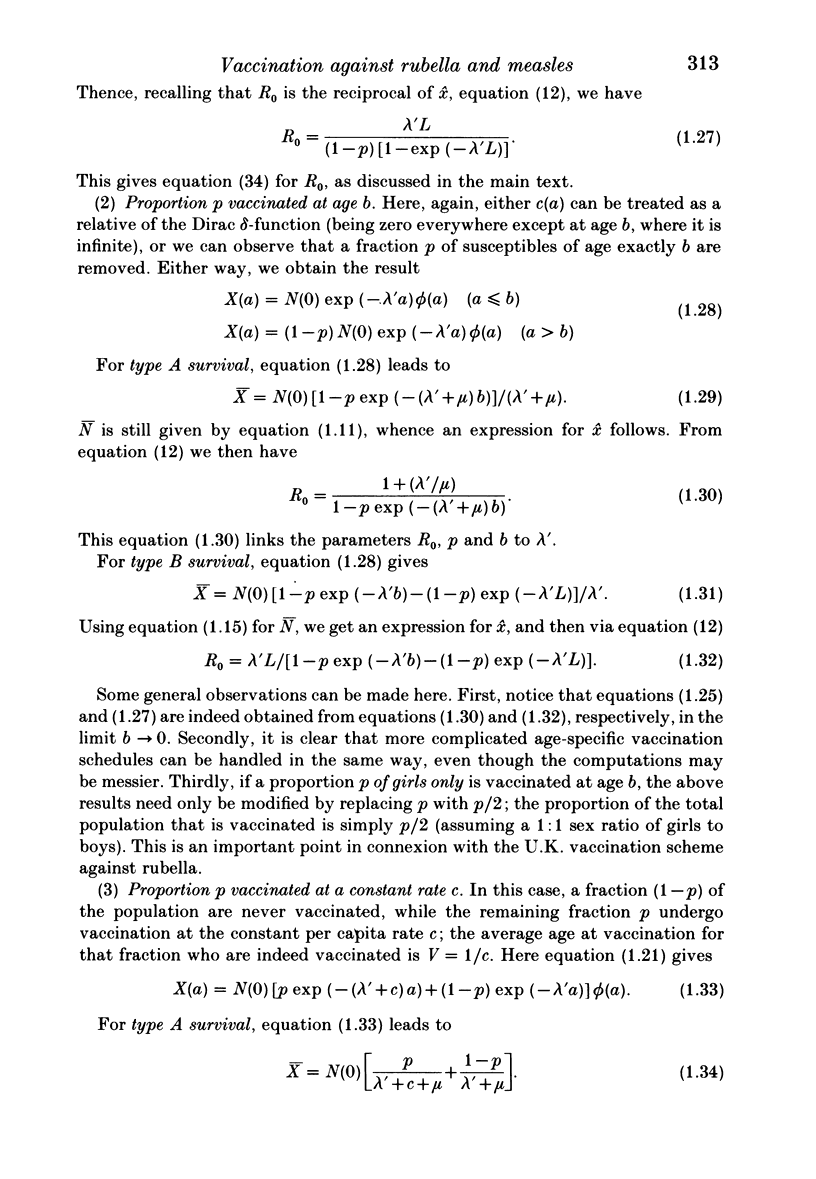
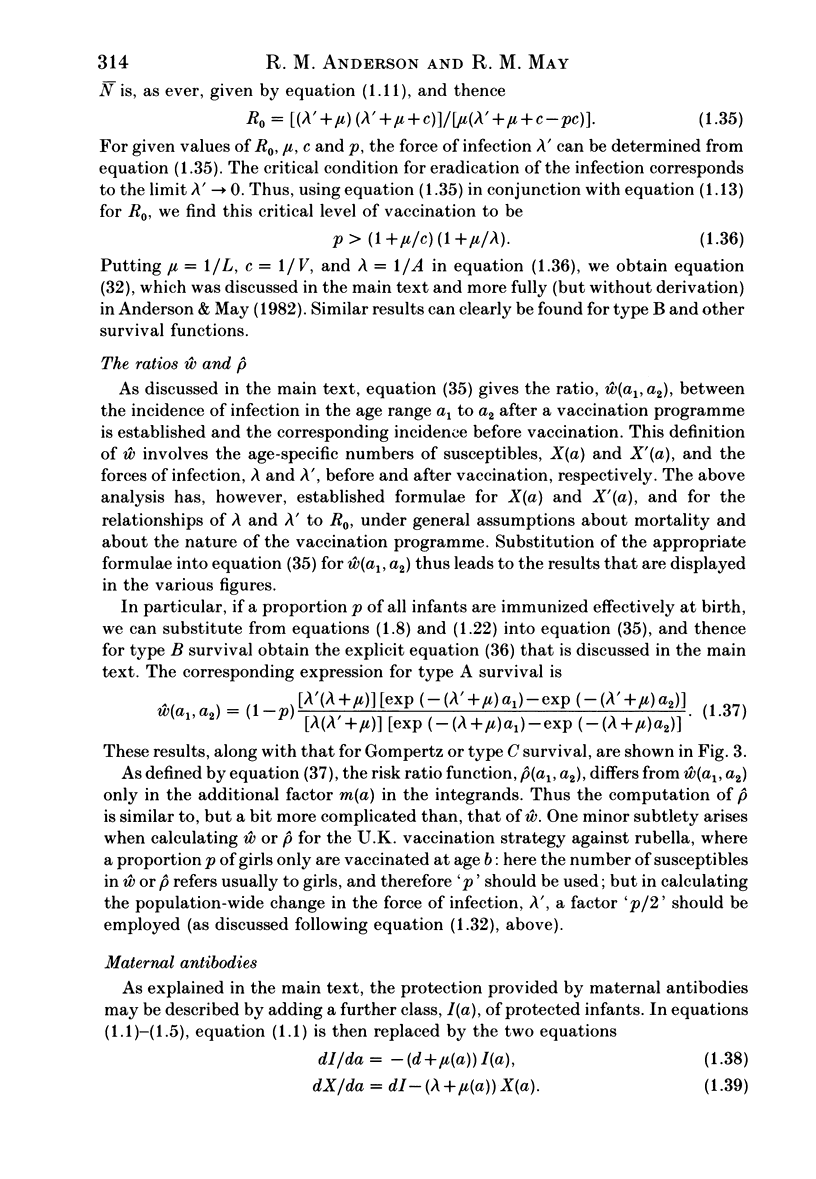
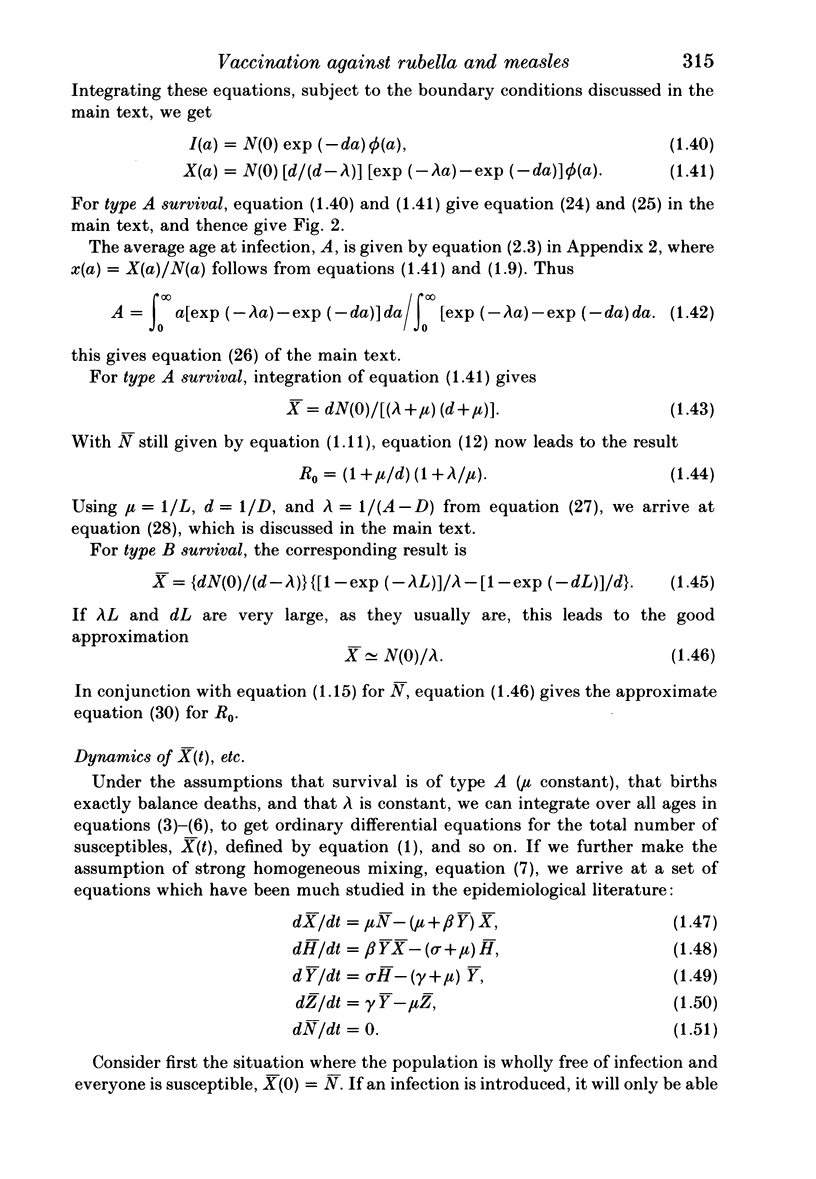
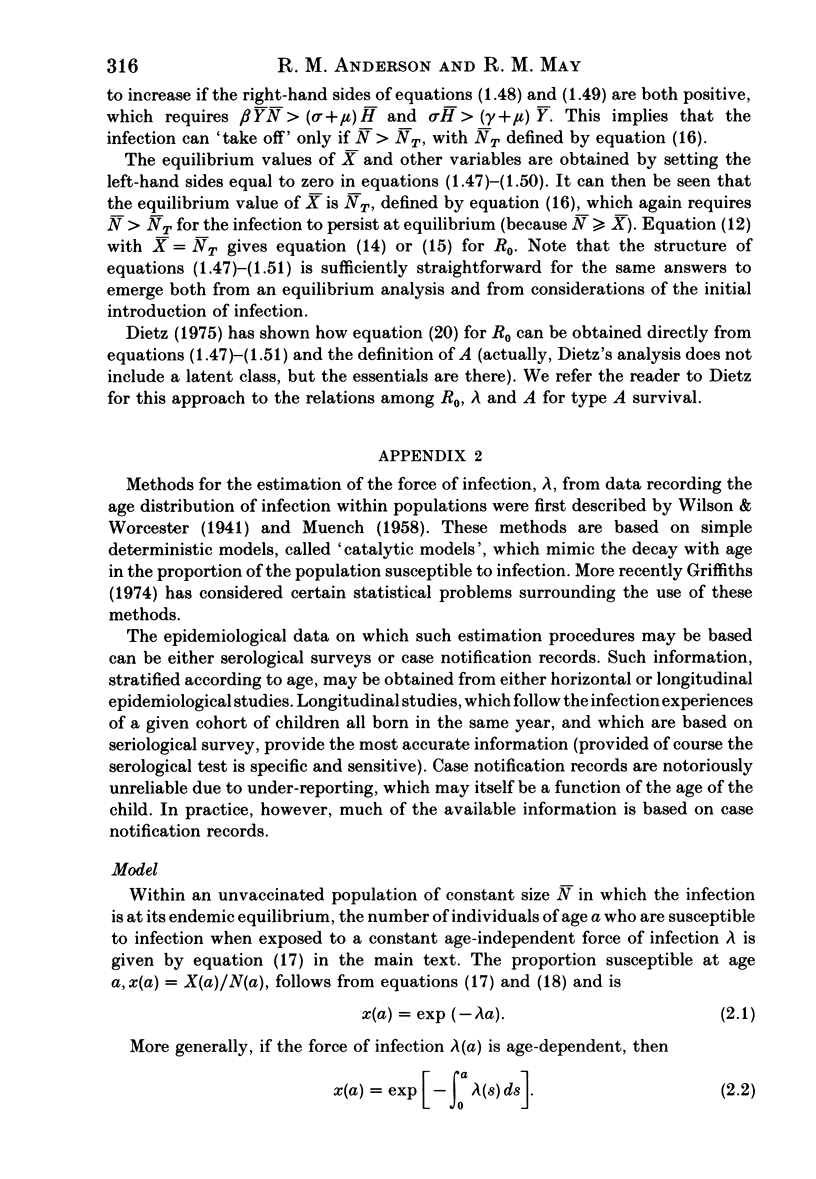
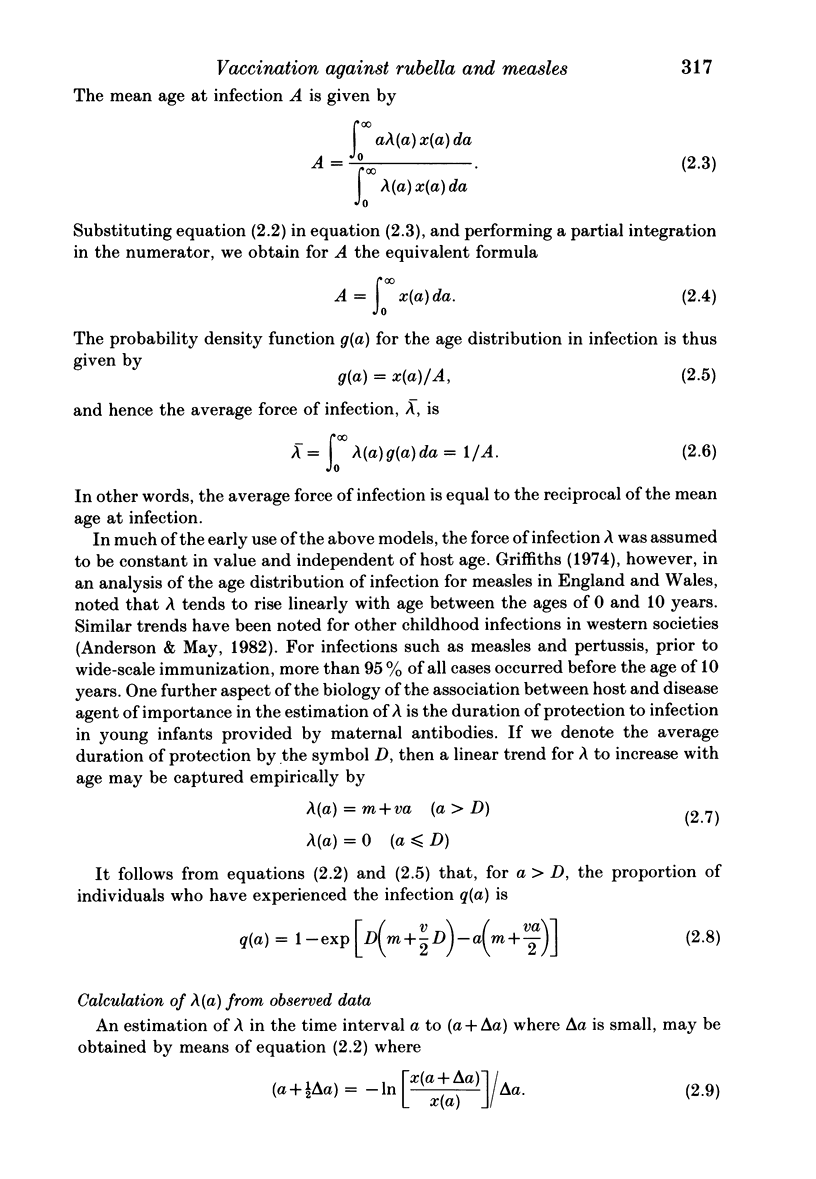
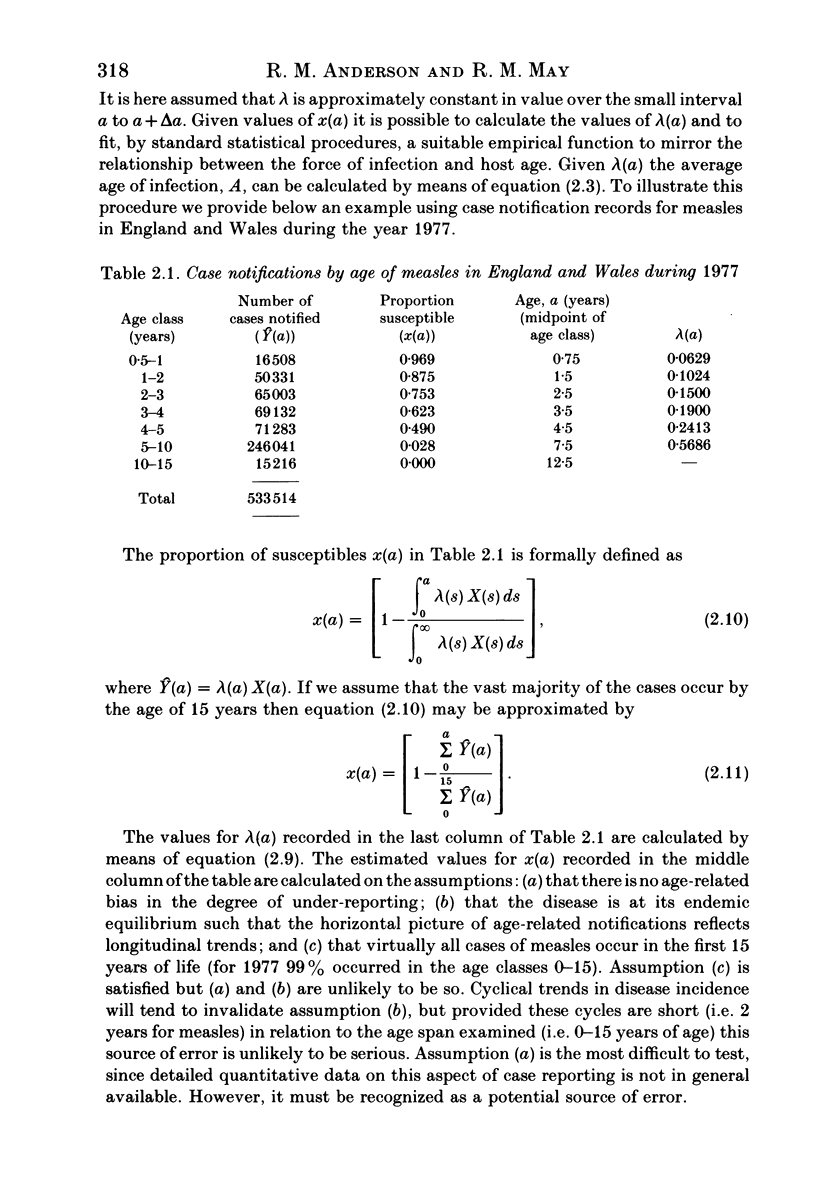
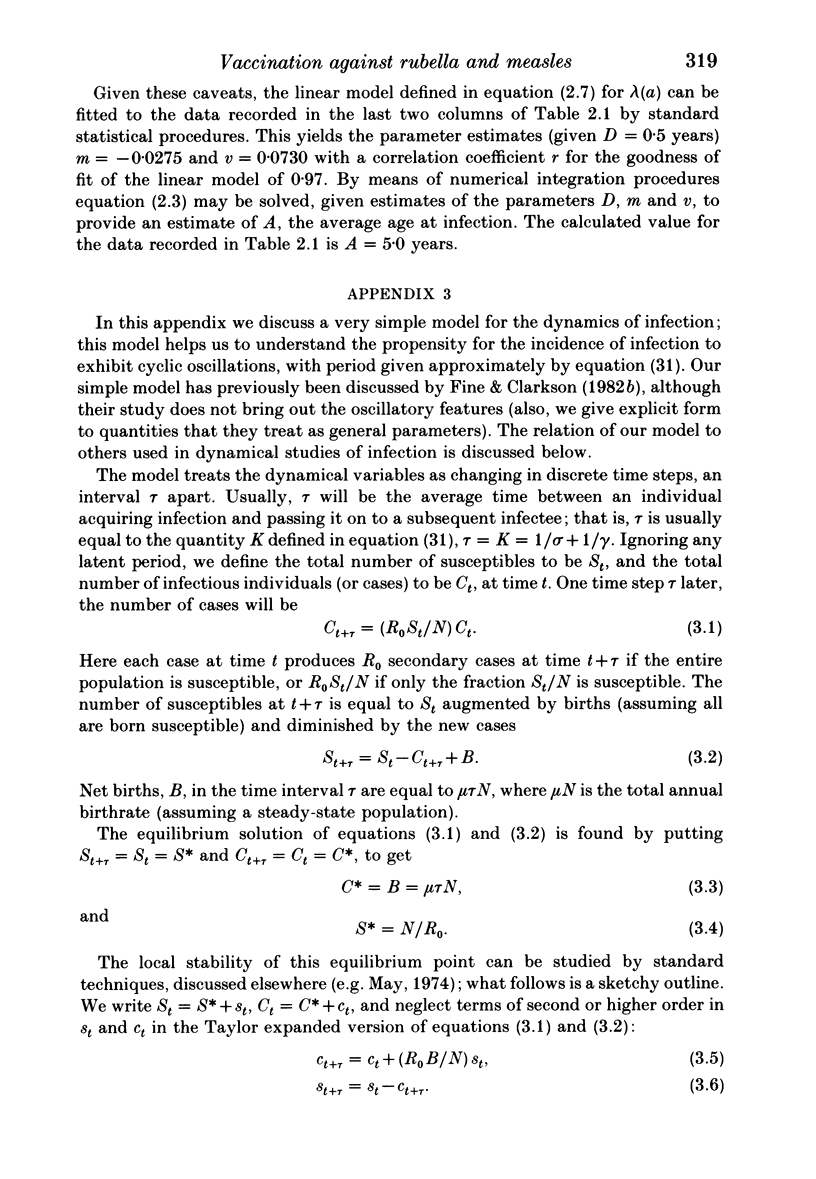
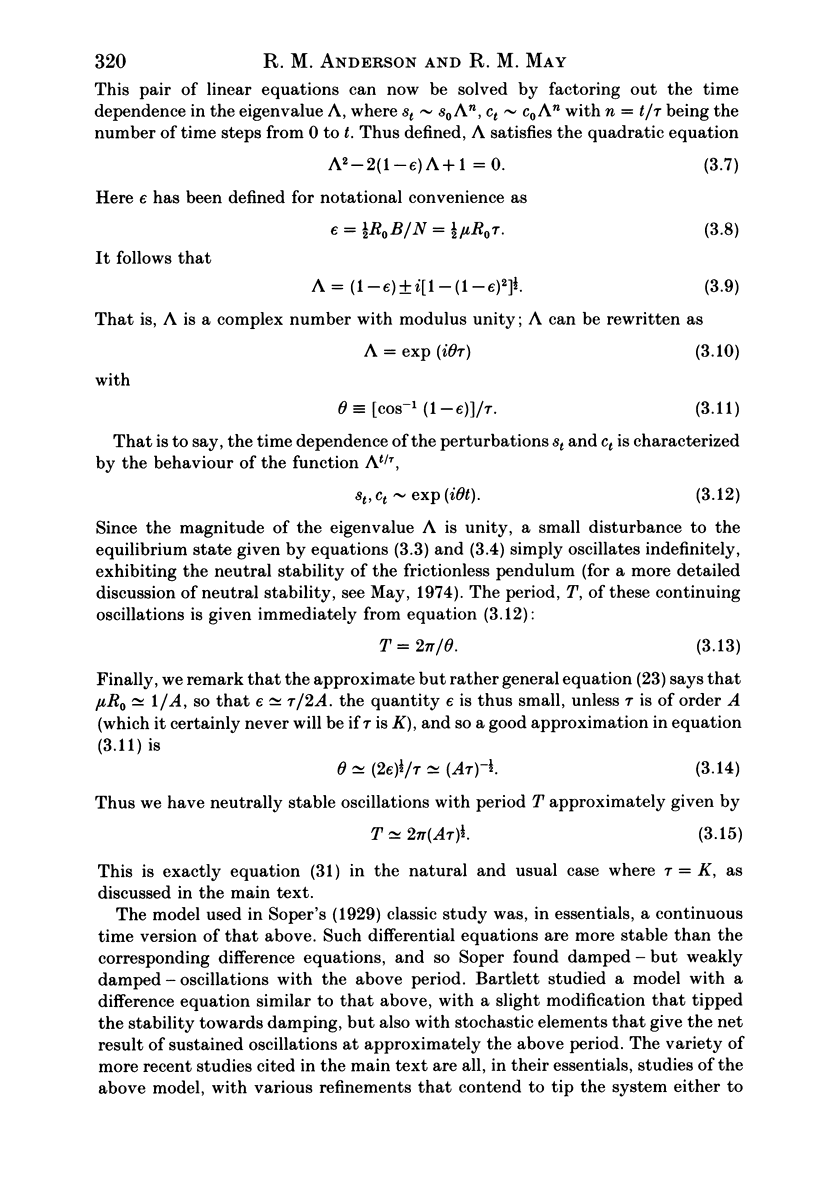
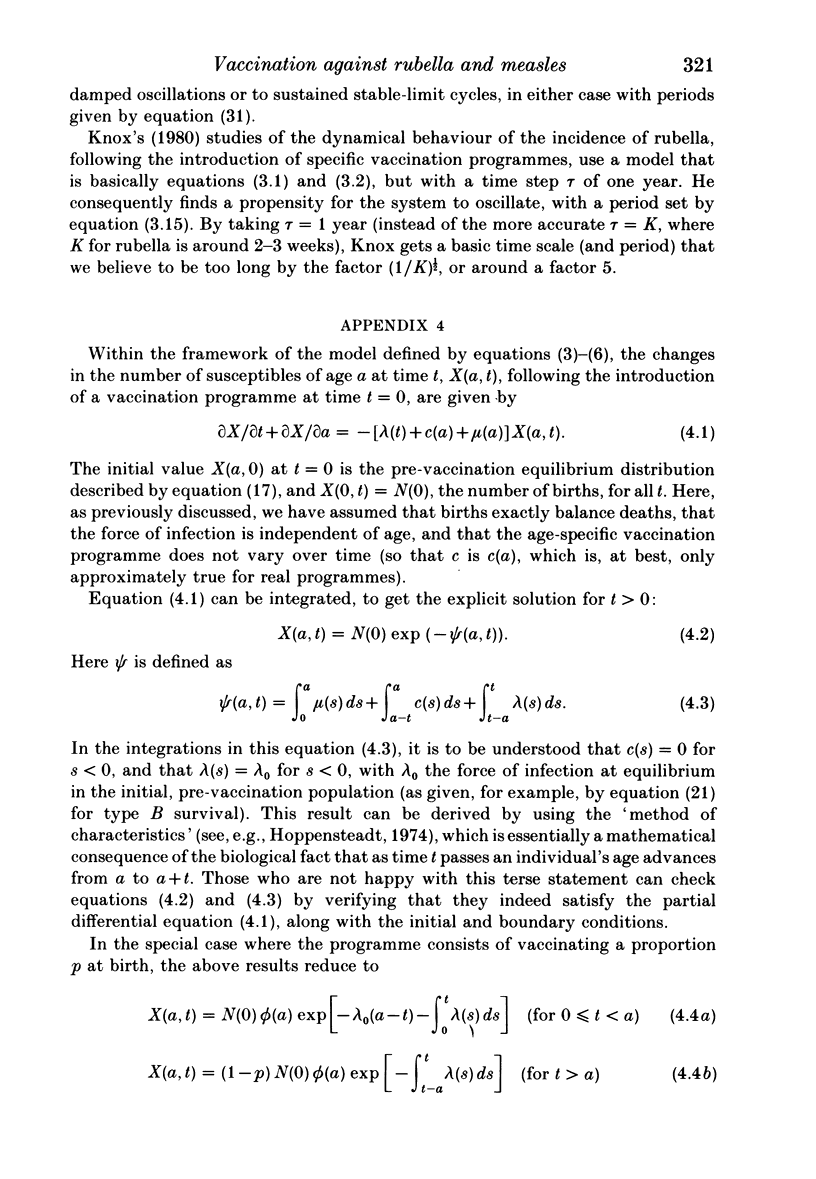
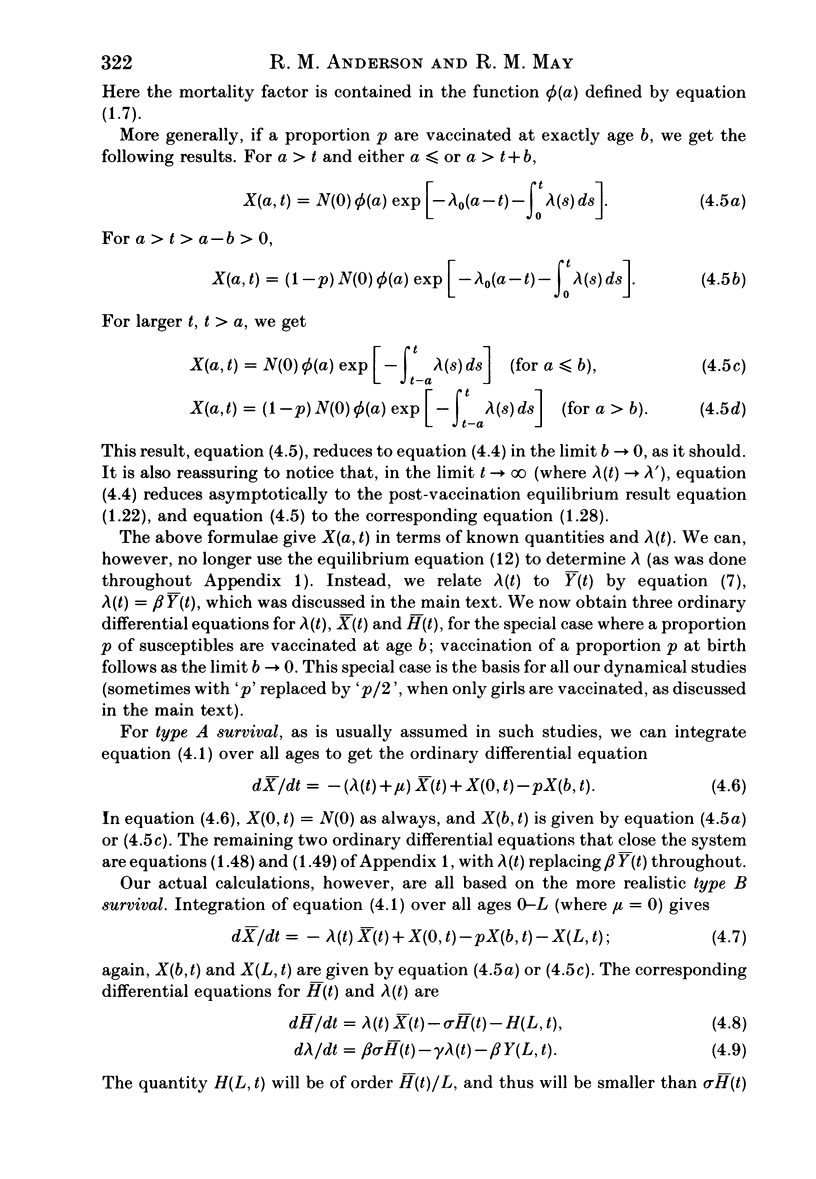
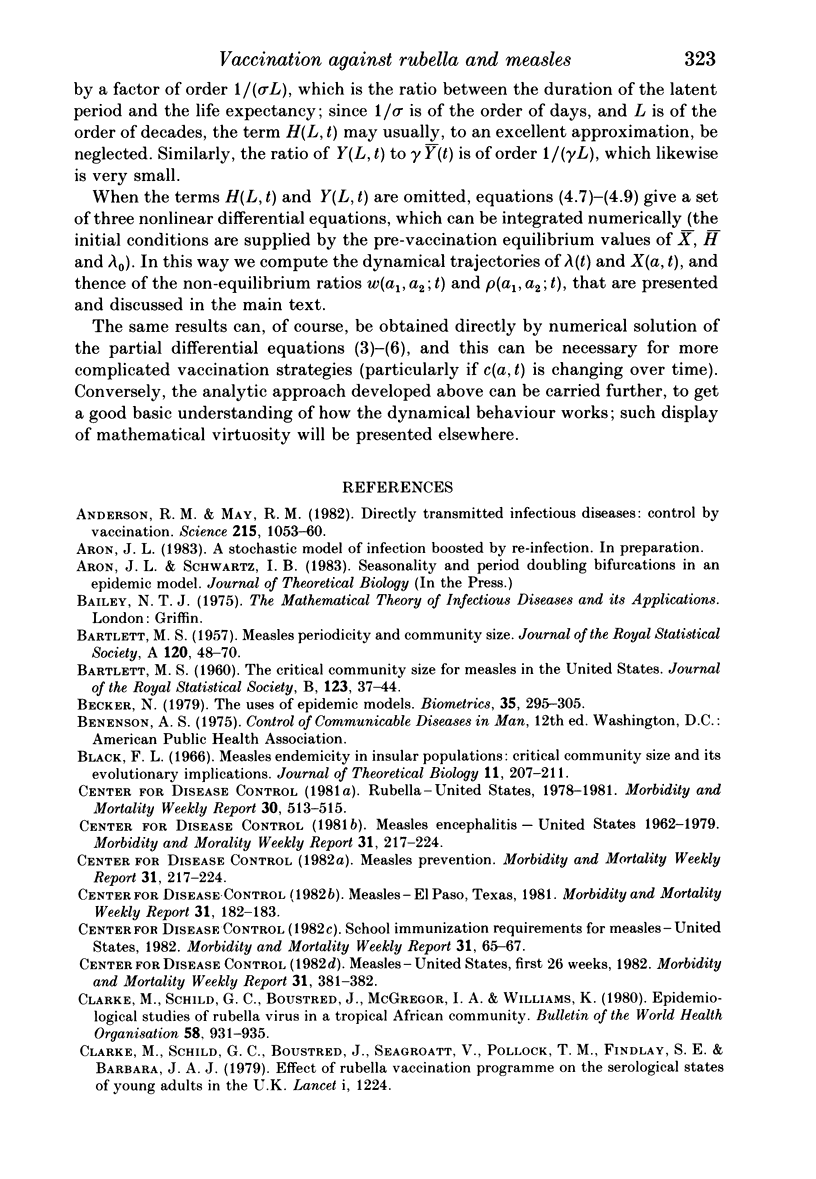
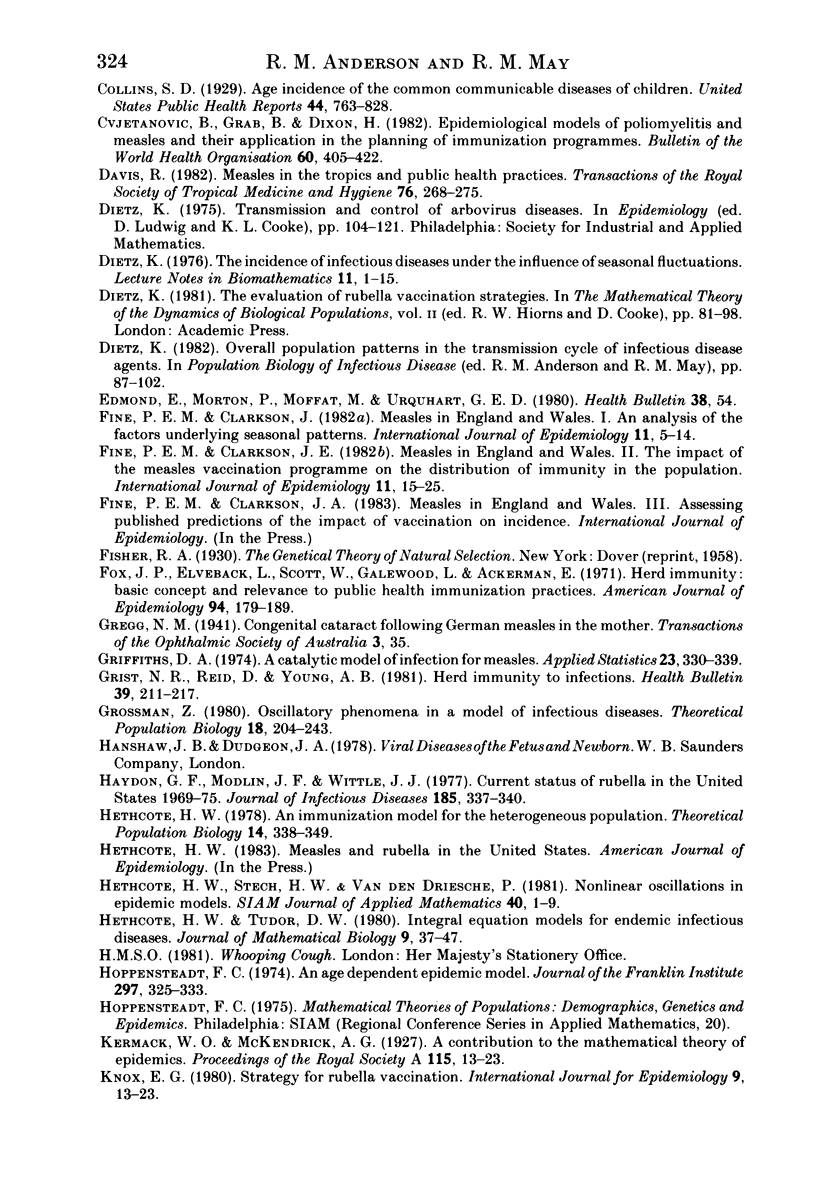
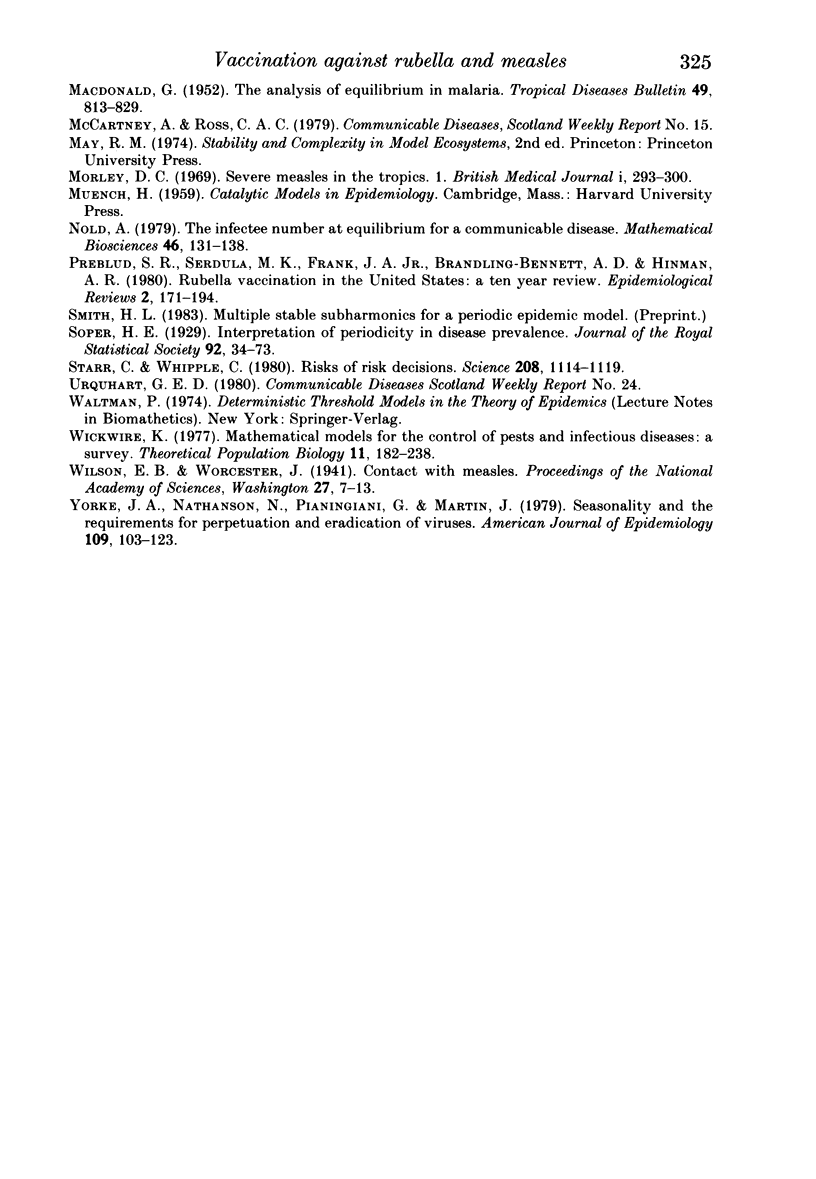
Selected References
These references are in PubMed. This may not be the complete list of references from this article.
- Anderson R. M., May R. M. Directly transmitted infections diseases: control by vaccination. Science. 1982 Feb 26;215(4536):1053–1060. doi: 10.1126/science.7063839. [DOI] [PubMed] [Google Scholar]
- Bailey R. R., Little P. J. Suprapubic bladder aspiration in diagnosis of urinary tract infection. Br Med J. 1969 Feb 1;1(5639):293–294. doi: 10.1136/bmj.1.5639.293. [DOI] [PMC free article] [PubMed] [Google Scholar]
- Becker N. The uses of epidemic models. Biometrics. 1979 Mar;35(1):295–305. [PubMed] [Google Scholar]
- Black F. L. Measles endemicity in insular populations: critical community size and its evolutionary implication. J Theor Biol. 1966 Jul;11(2):207–211. doi: 10.1016/0022-5193(66)90161-5. [DOI] [PubMed] [Google Scholar]
- Clarke M., Schild G. C., Boustred J., McGregor I. A., Williams K. Epidemiological studies of rubella virus in a tropical African community. Bull World Health Organ. 1980;58(6):931–935. [PMC free article] [PubMed] [Google Scholar]
- Clarke M., Schild G. C., Boustred J., Seagroatt V., Pollock T. M., Finlay S. E., Barbara J. A. Effect of rubella vaccination programme on serological status of young adults in United Kingdom. Lancet. 1979 Jun 9;1(8128):1224–1226. doi: 10.1016/s0140-6736(79)91906-8. [DOI] [PubMed] [Google Scholar]
- Cvjetanović B., Grab B., Dixon H. Epidemiological models of poliomyelitis and measles and their application in the planning of immunization programmes. Bull World Health Organ. 1982;60(3):405–422. [PMC free article] [PubMed] [Google Scholar]
- Davis R. Measles in the tropics and public health practice. Trans R Soc Trop Med Hyg. 1982;76(2):268–275. doi: 10.1016/0035-9203(82)90294-2. [DOI] [PubMed] [Google Scholar]
- Fine P. E., Clarkson J. A. Measles in England and Wales--I: An analysis of factors underlying seasonal patterns. Int J Epidemiol. 1982 Mar;11(1):5–14. doi: 10.1093/ije/11.1.5. [DOI] [PubMed] [Google Scholar]
- Fine P. E., Clarkson J. A. Measles in England and Wales--II: The impact of the measles vaccination programme on the distribution of immunity in the population. Int J Epidemiol. 1982 Mar;11(1):15–25. doi: 10.1093/ije/11.1.15. [DOI] [PubMed] [Google Scholar]
- Fox J. P., Elveback L., Scott W., Gatewood L., Ackerman E. Herd immunity: basic concept and relevance to public health immunization practices. Am J Epidemiol. 1971 Sep;94(3):179–189. doi: 10.1093/oxfordjournals.aje.a121310. [DOI] [PubMed] [Google Scholar]
- Grist N. R., Reid D., Young A. B. Herd immunity to infections. Health Bull (Edinb) 1981 Jul;39(4):211–217. [PubMed] [Google Scholar]
- Grossman Z. Oscillatory phenomena in a model of infectious diseases. Theor Popul Biol. 1980 Oct;18(2):204–243. doi: 10.1016/0040-5809(80)90050-7. [DOI] [PubMed] [Google Scholar]
- Hayden G. F., Modlin J. F., Witte J. J. Current status of rubella in the United States, 1969-1975. J Infect Dis. 1977 Feb;135(2):337–340. [PubMed] [Google Scholar]
- Hethcote H. W. An immunization model for a heterogeneous population. Theor Popul Biol. 1978 Dec;14(3):338–349. doi: 10.1016/0040-5809(78)90011-4. [DOI] [PubMed] [Google Scholar]
- Hethcote H. W., Tudor D. W. Integral equation models for endemic infectious diseases. J Math Biol. 1980 Mar;9(1):37–47. doi: 10.1007/BF00276034. [DOI] [PubMed] [Google Scholar]
- Knox E. G. Strategy for rubella vaccination. Int J Epidemiol. 1980 Mar;9(1):13–23. doi: 10.1093/ije/9.1.13. [DOI] [PubMed] [Google Scholar]
- MACDONALD G. The analysis of equilibrium in malaria. Trop Dis Bull. 1952 Sep;49(9):813–829. [PubMed] [Google Scholar]
- Preblud S. R., Serdula M. K., Frank J. A., Jr, Brandling-Bennett A. D., Hinman A. R. Rubella vaccination in the United States: a ten-year review. Epidemiol Rev. 1980;2:171–194. doi: 10.1093/oxfordjournals.epirev.a036221. [DOI] [PubMed] [Google Scholar]
- Starr C., Whipple C. Risks of risk decisions. Science. 1980 Jun 6;208(4448):1114–1119. doi: 10.1126/science.208.4448.1114. [DOI] [PubMed] [Google Scholar]
- Wickwire K. Mathematical models for the control of pests and infectious diseases: a survey. Theor Popul Biol. 1977 Apr;11(2):182–238. doi: 10.1016/0040-5809(77)90025-9. [DOI] [PubMed] [Google Scholar]
- Wilson E. B., Worcester J. Contact and Measles. Proc Natl Acad Sci U S A. 1941 Jan 15;27(1):7–13. doi: 10.1073/pnas.27.1.7. [DOI] [PMC free article] [PubMed] [Google Scholar]
- Yorke J. A., Nathanson N., Pianigiani G., Martin J. Seasonality and the requirements for perpetuation and eradication of viruses in populations. Am J Epidemiol. 1979 Feb;109(2):103–123. doi: 10.1093/oxfordjournals.aje.a112666. [DOI] [PubMed] [Google Scholar]


